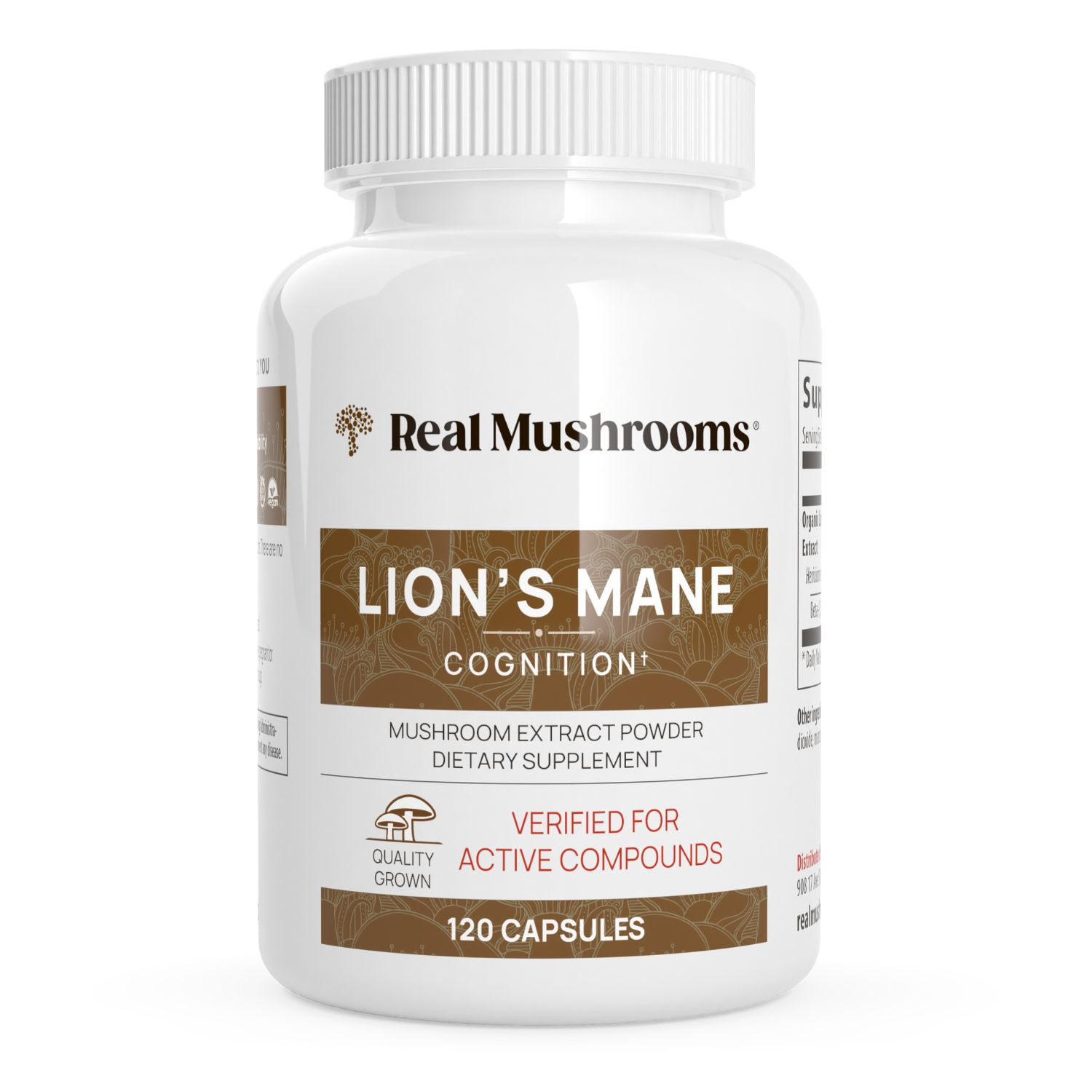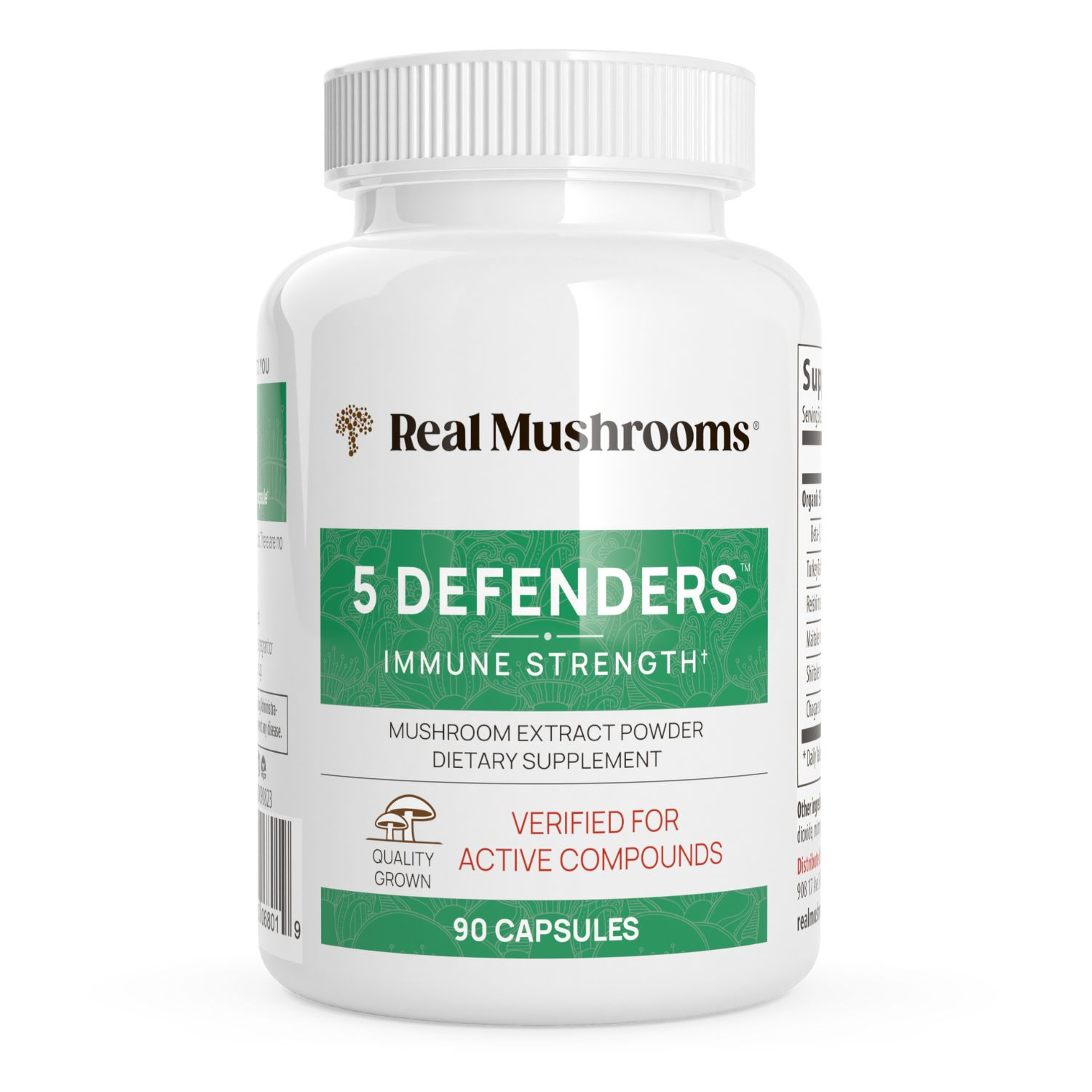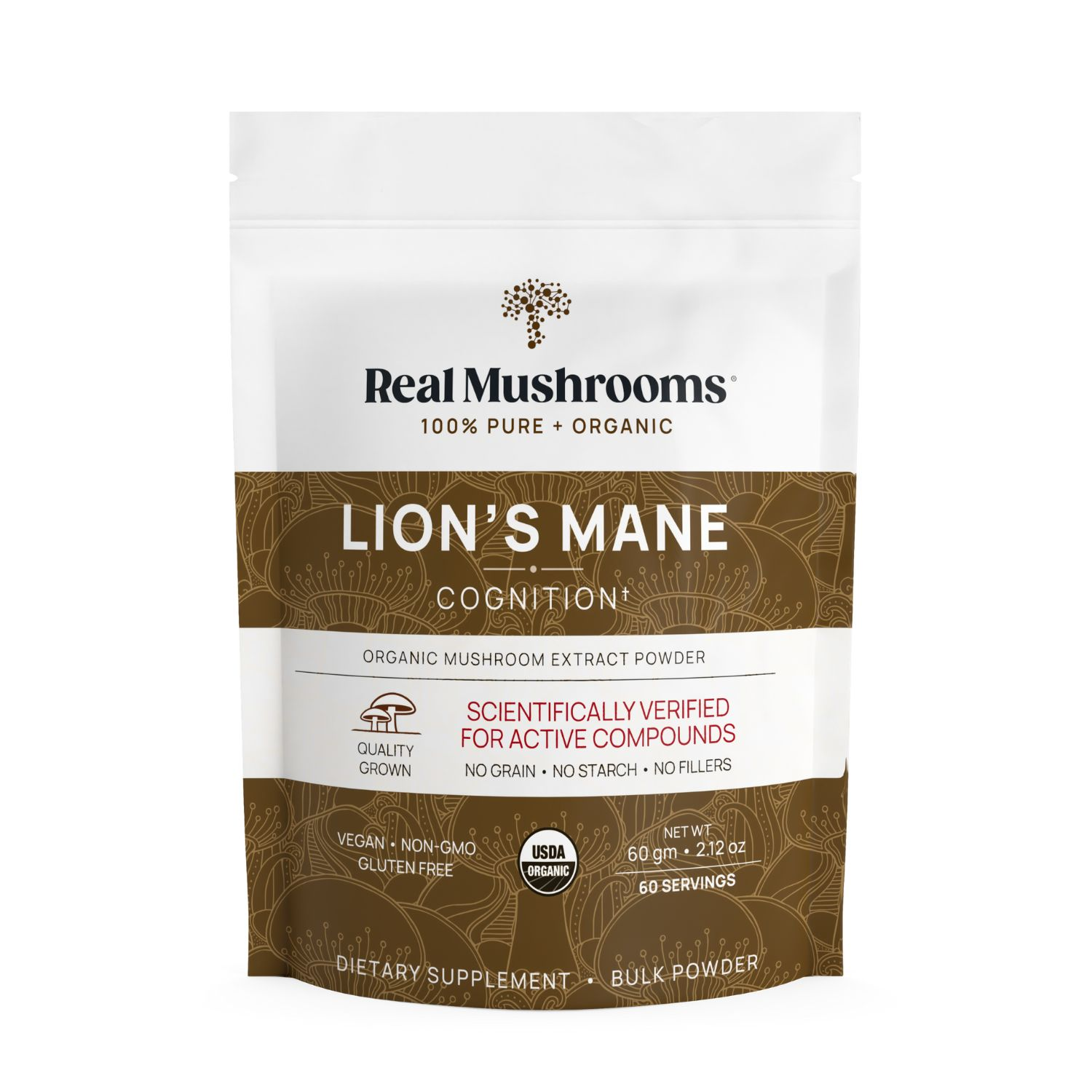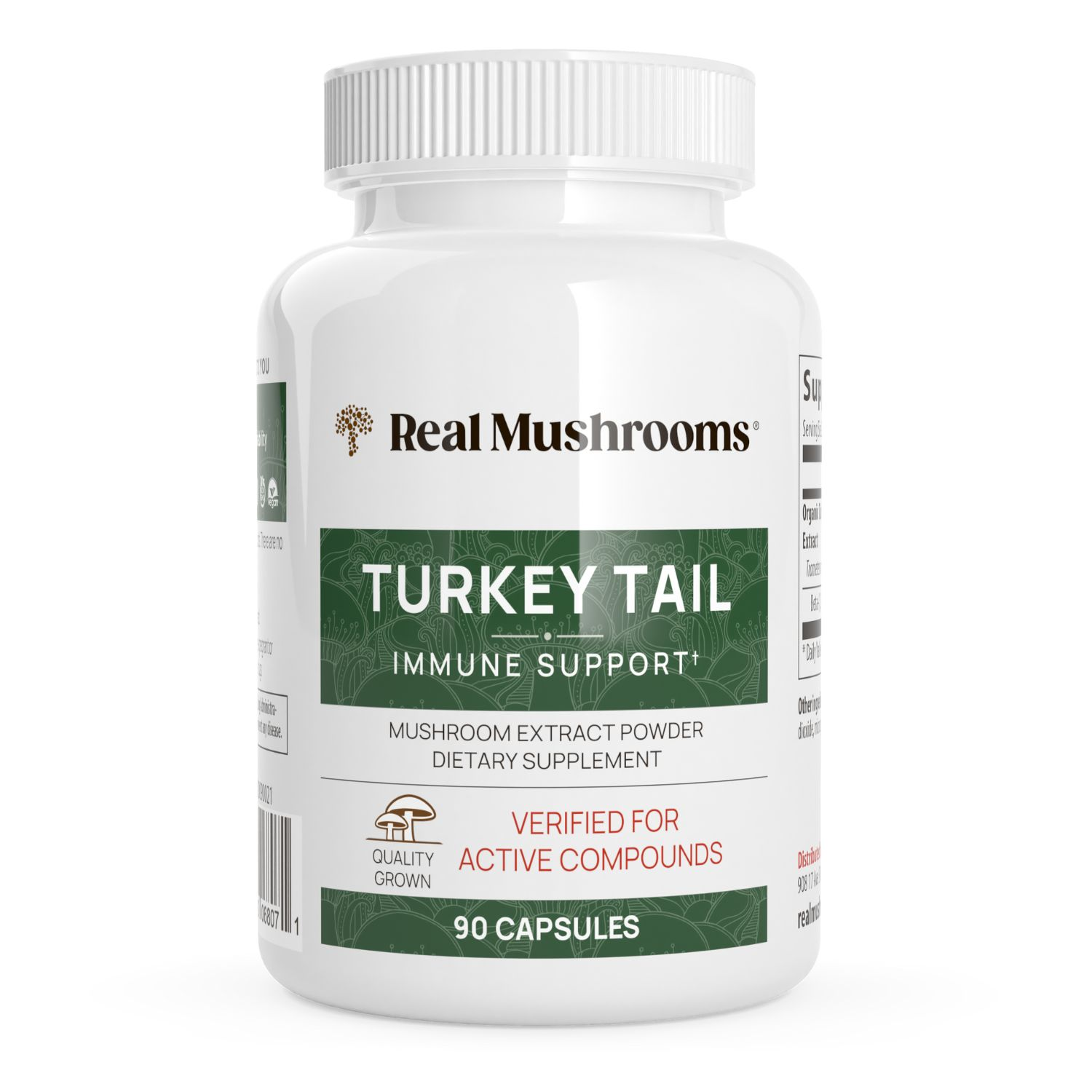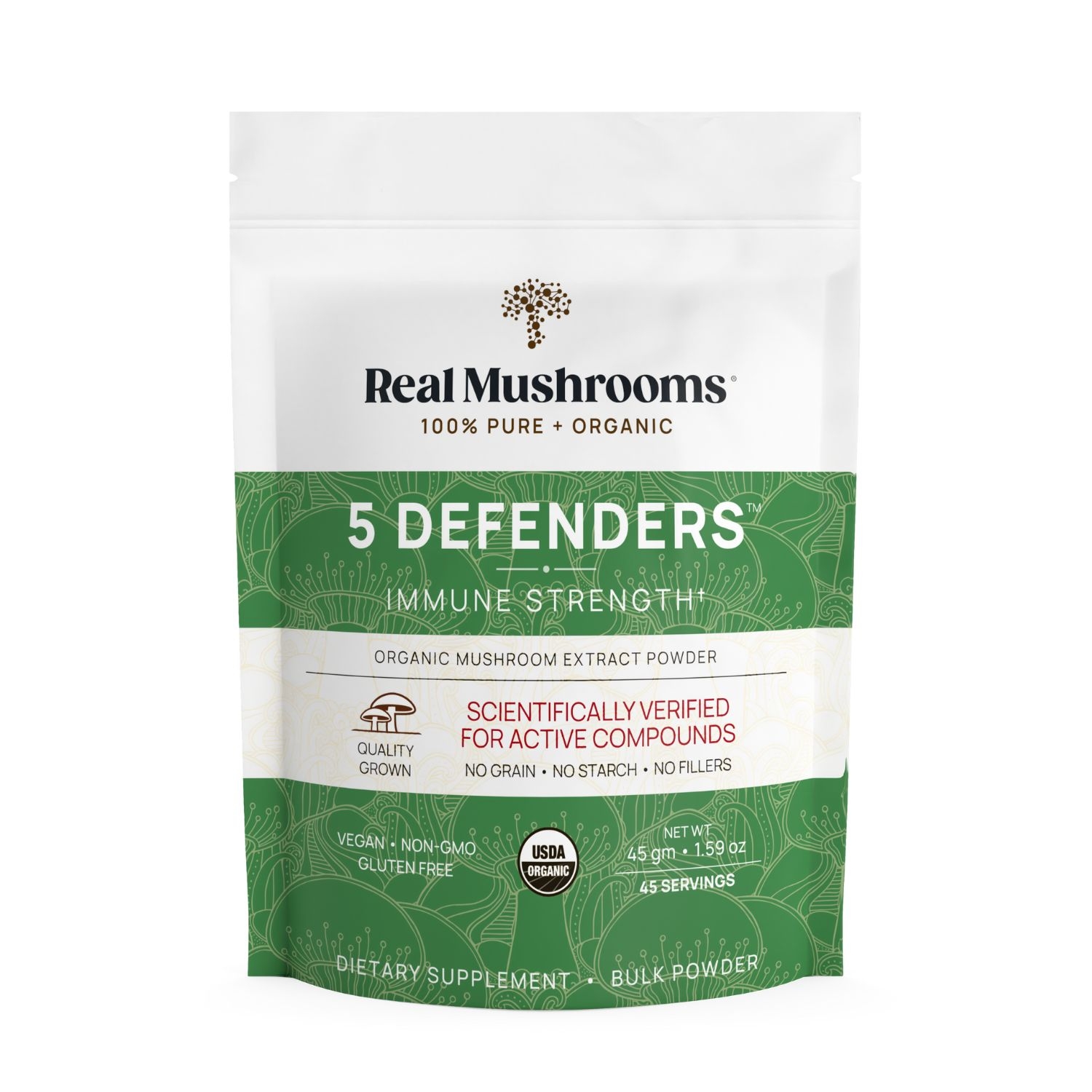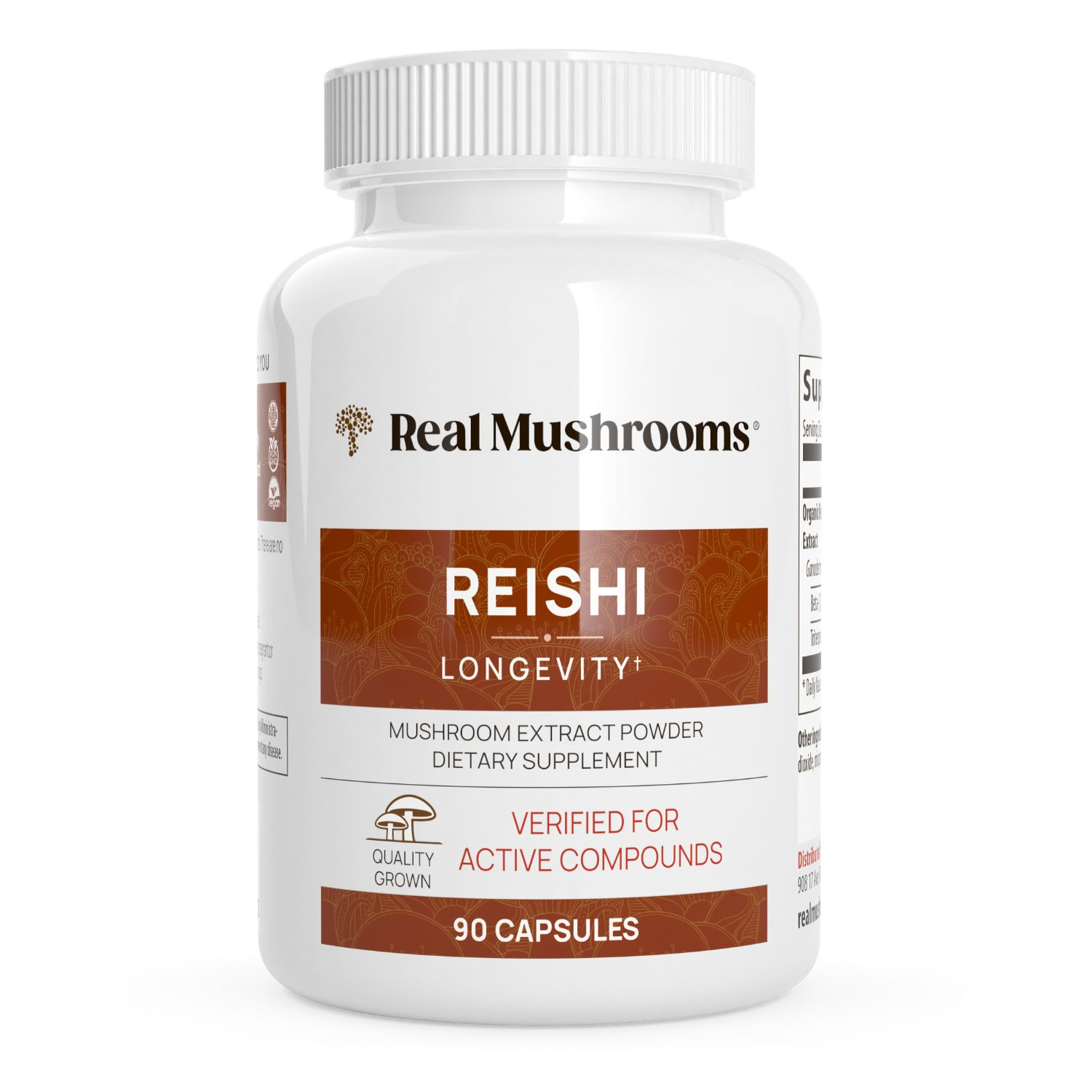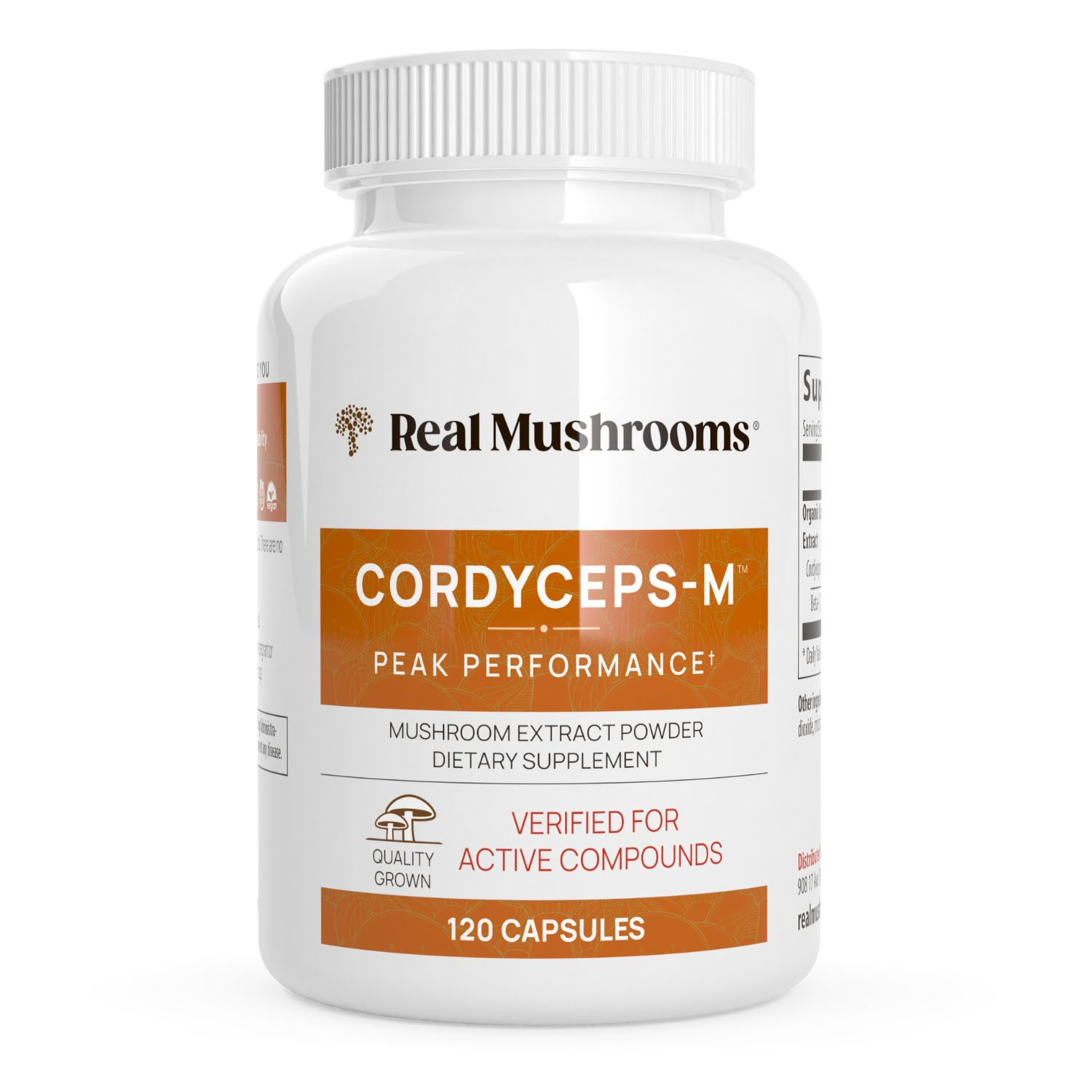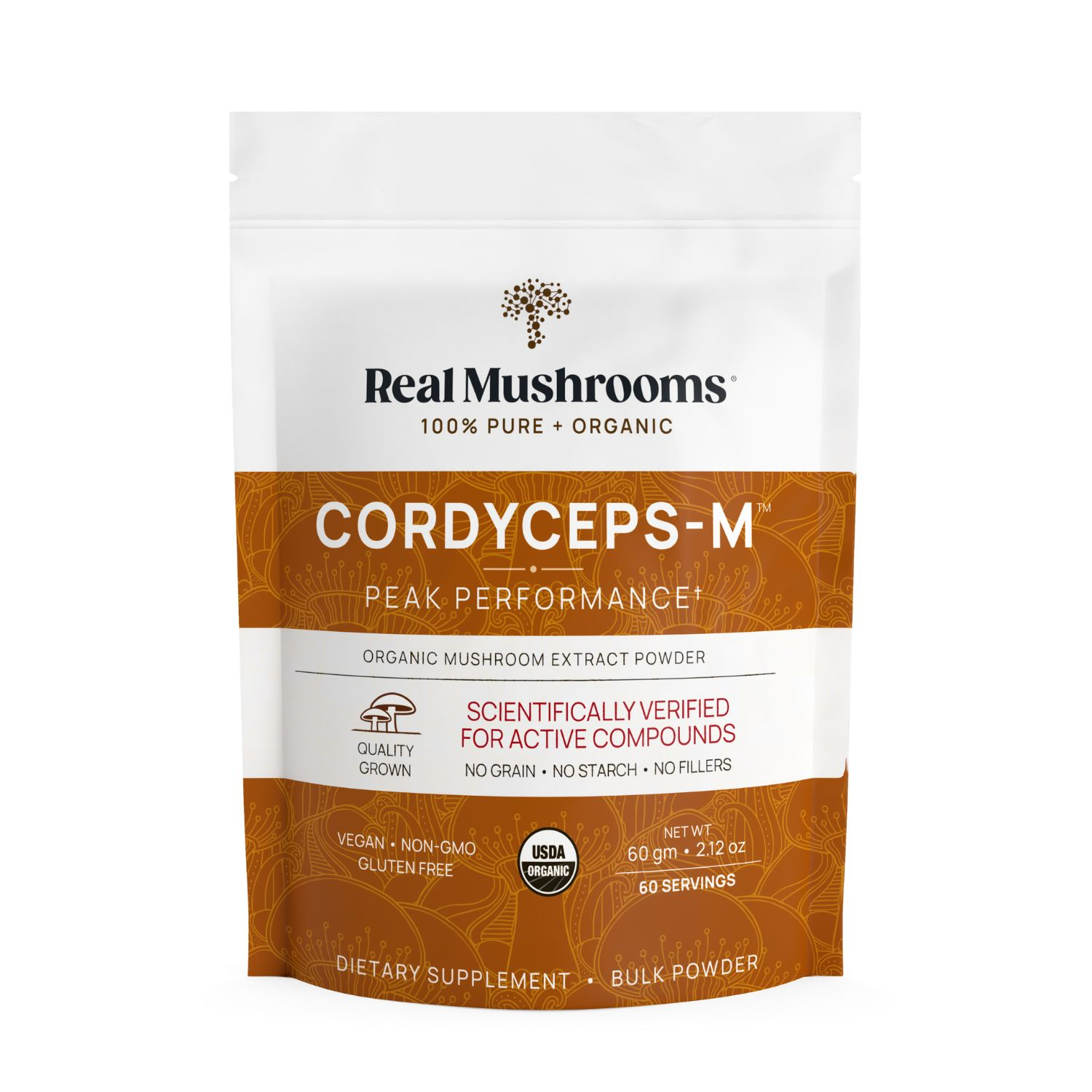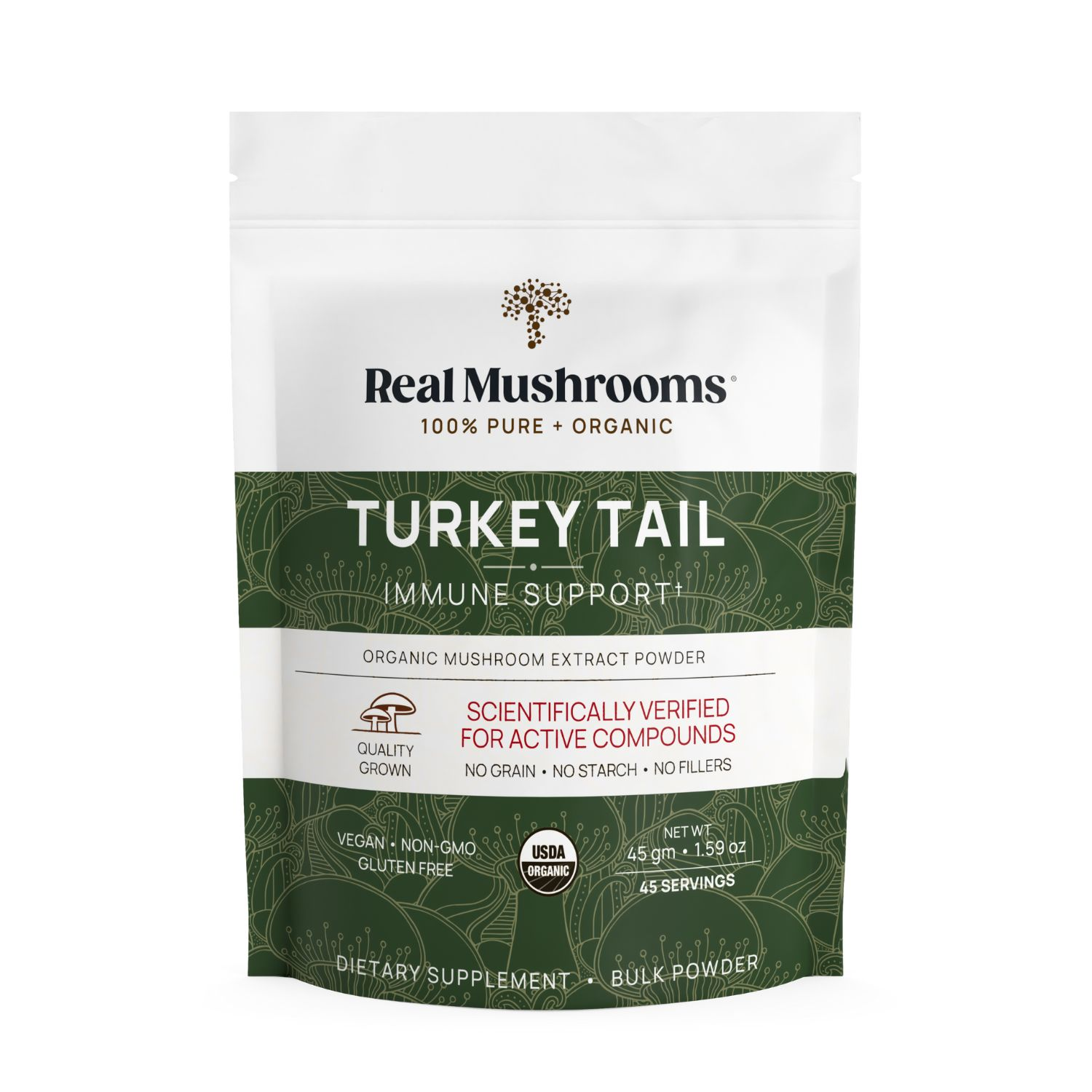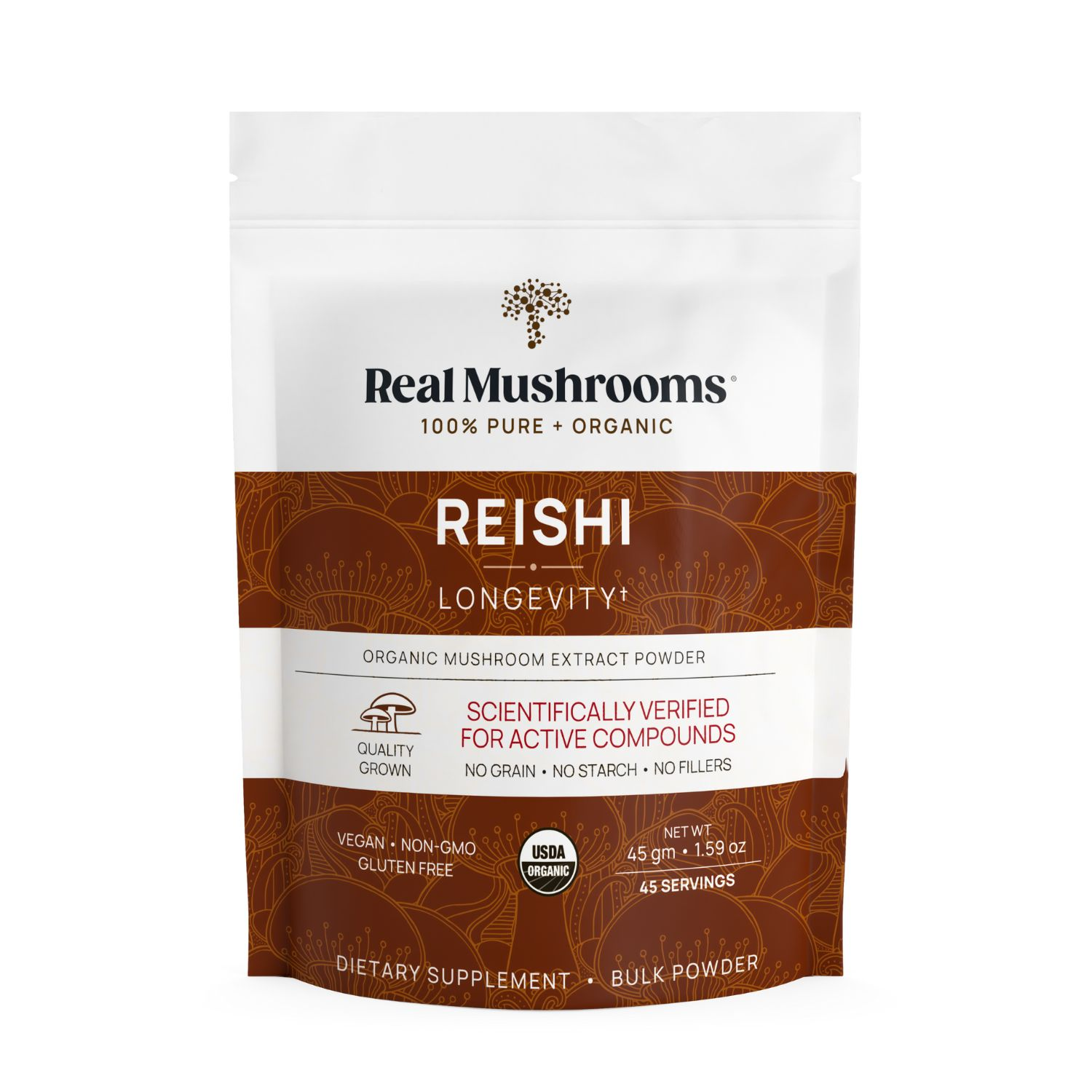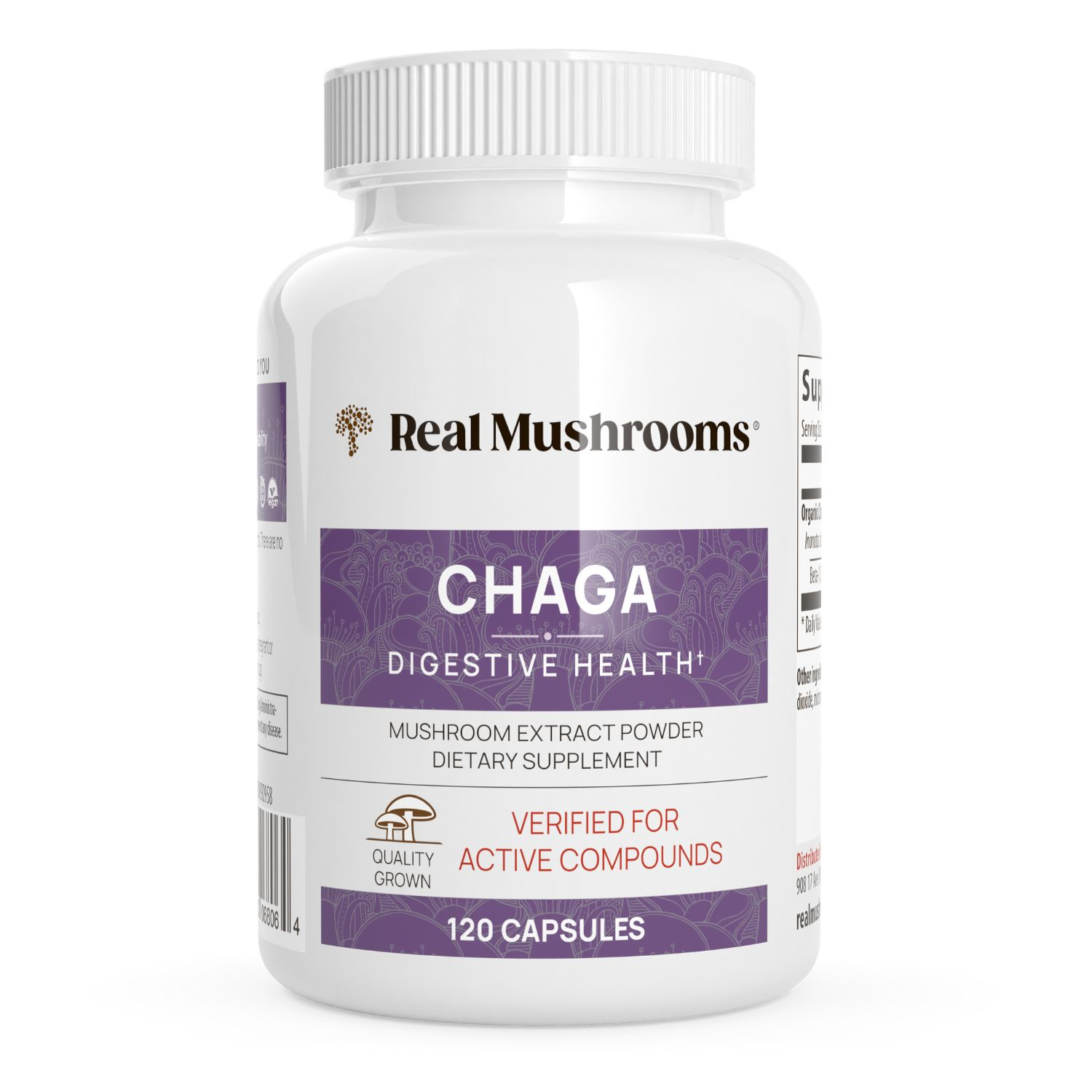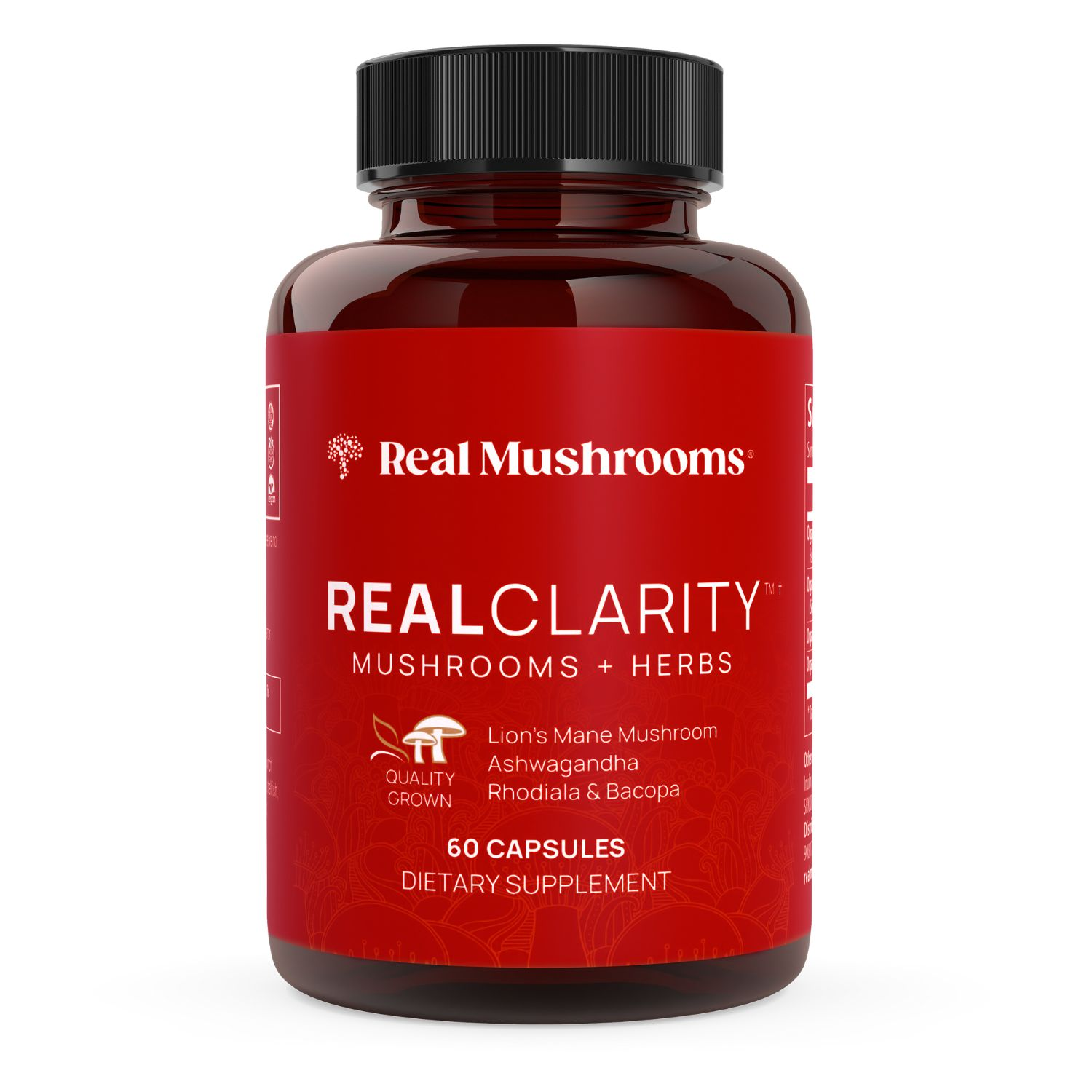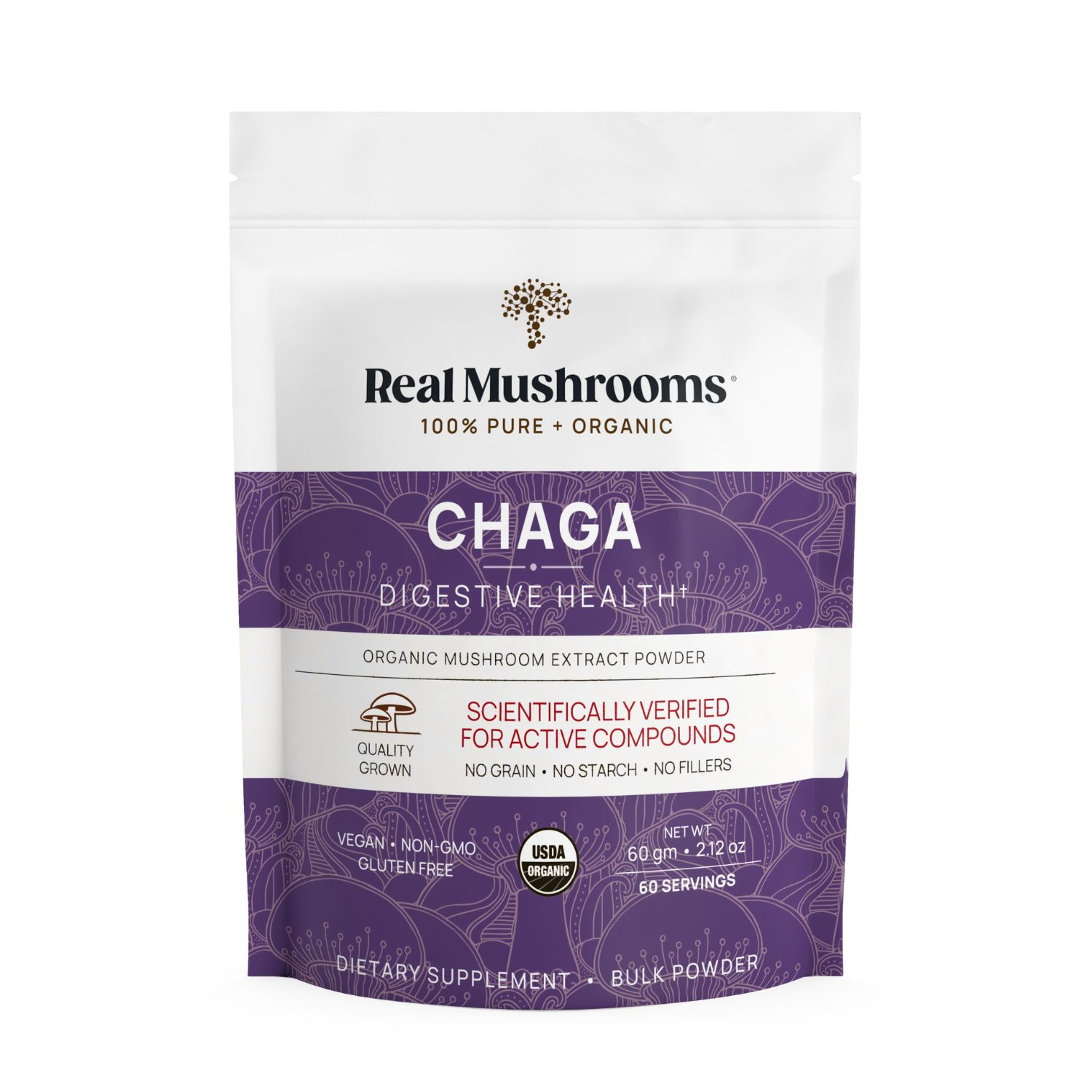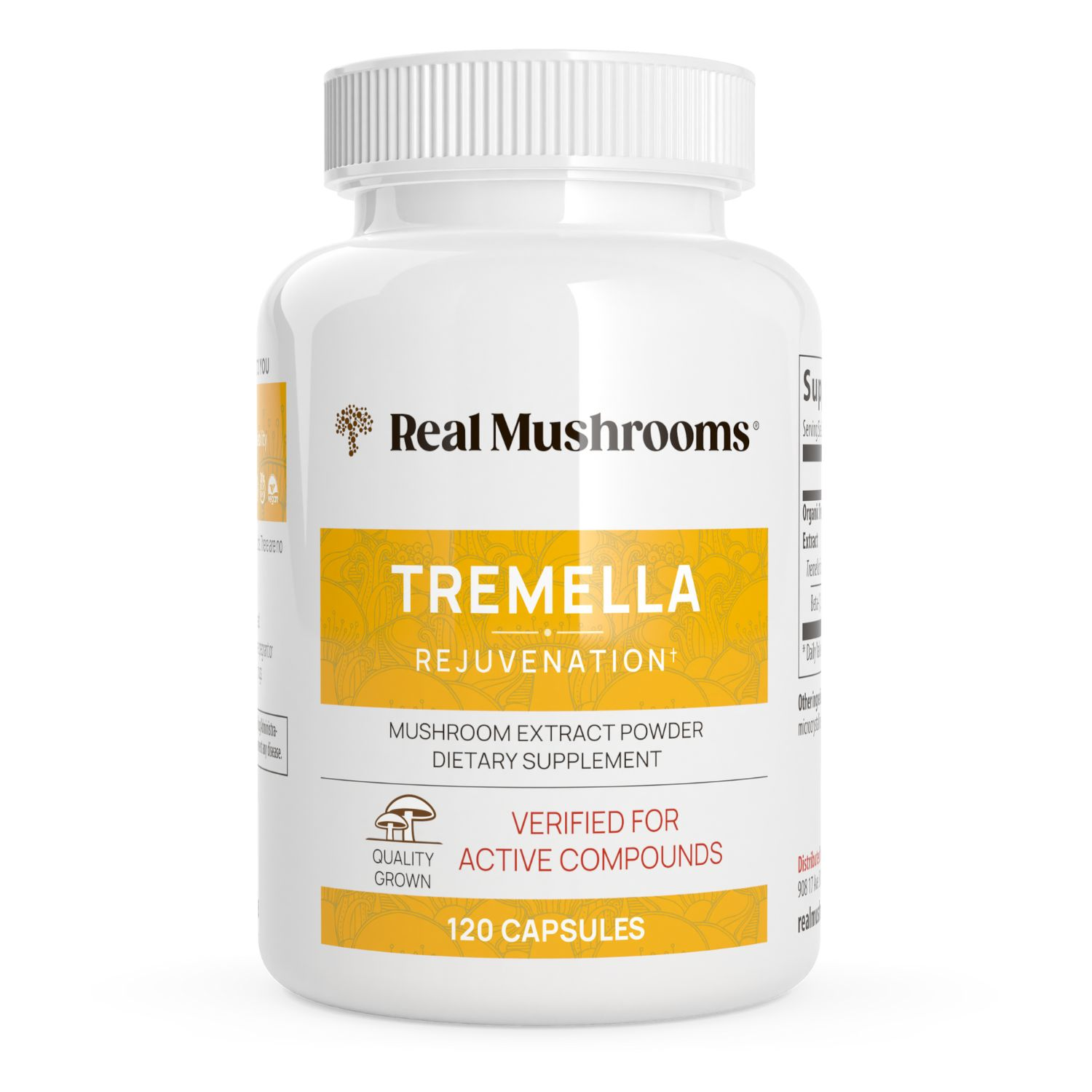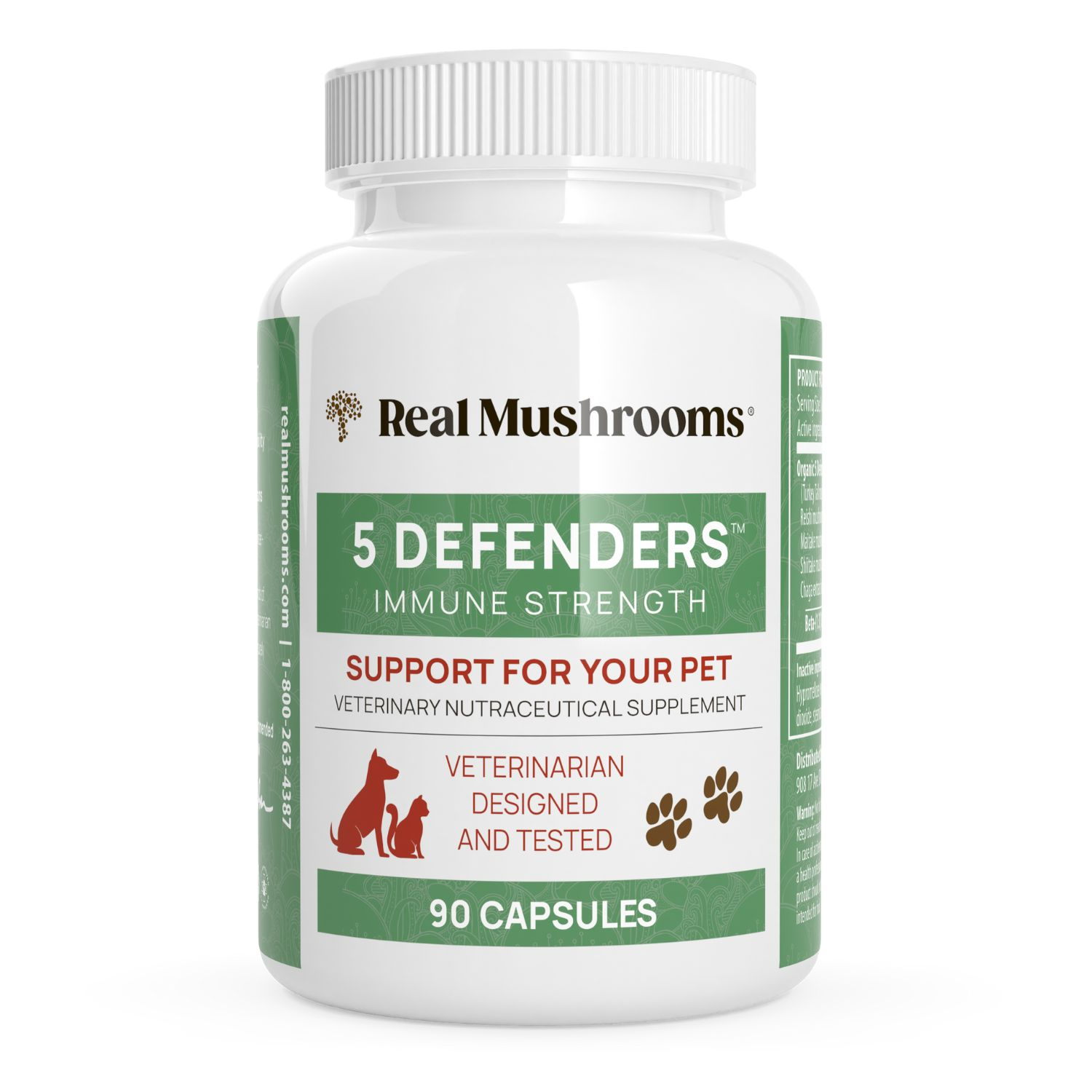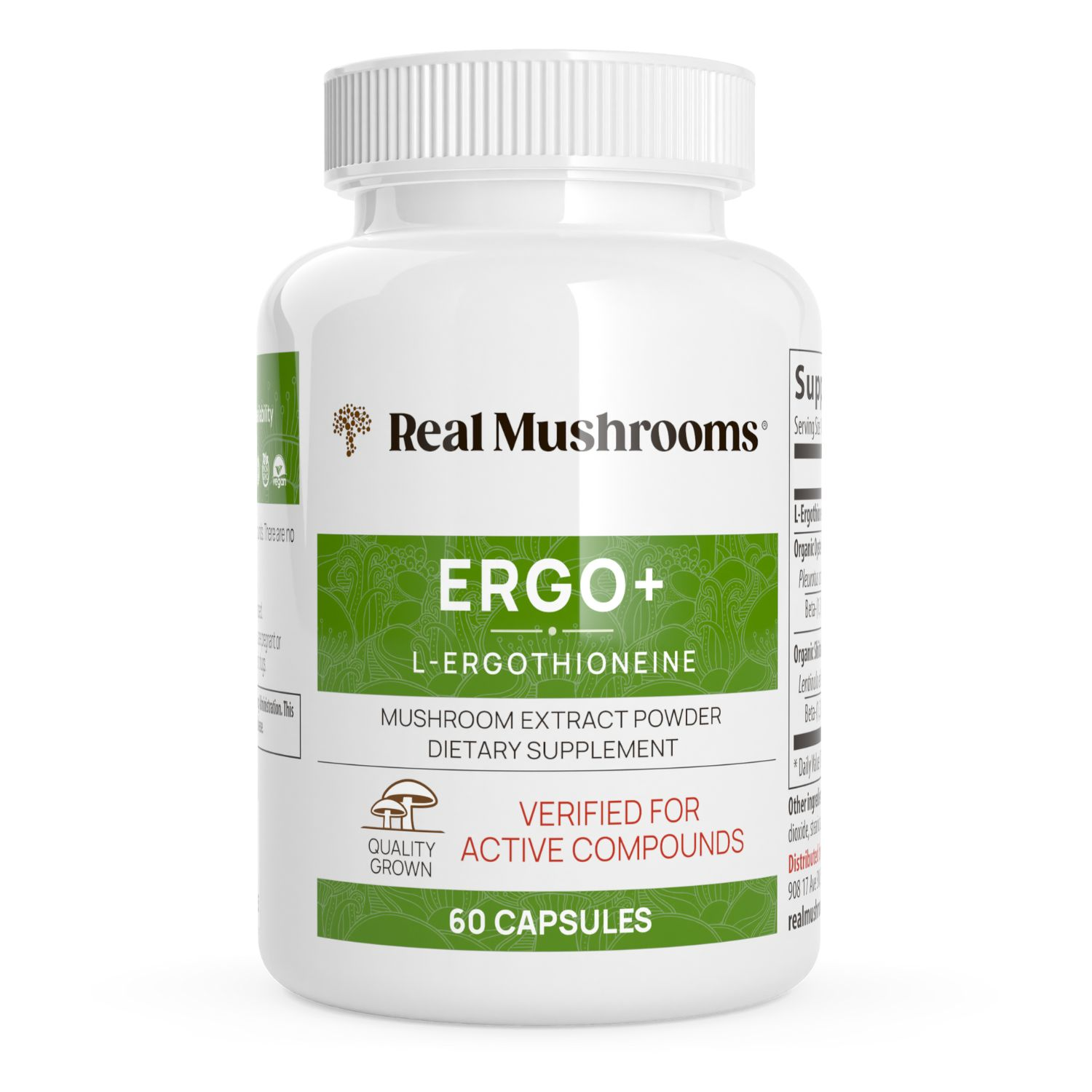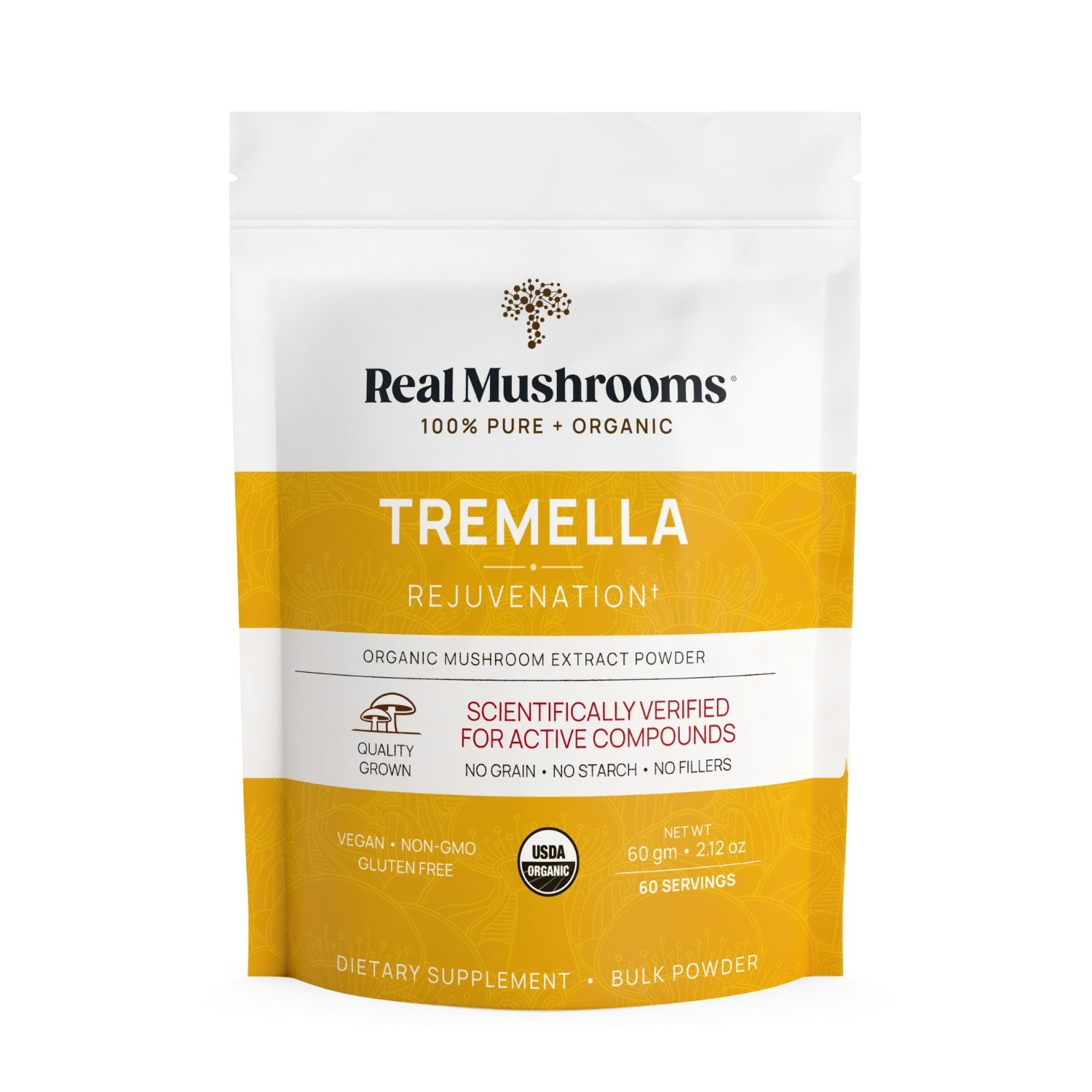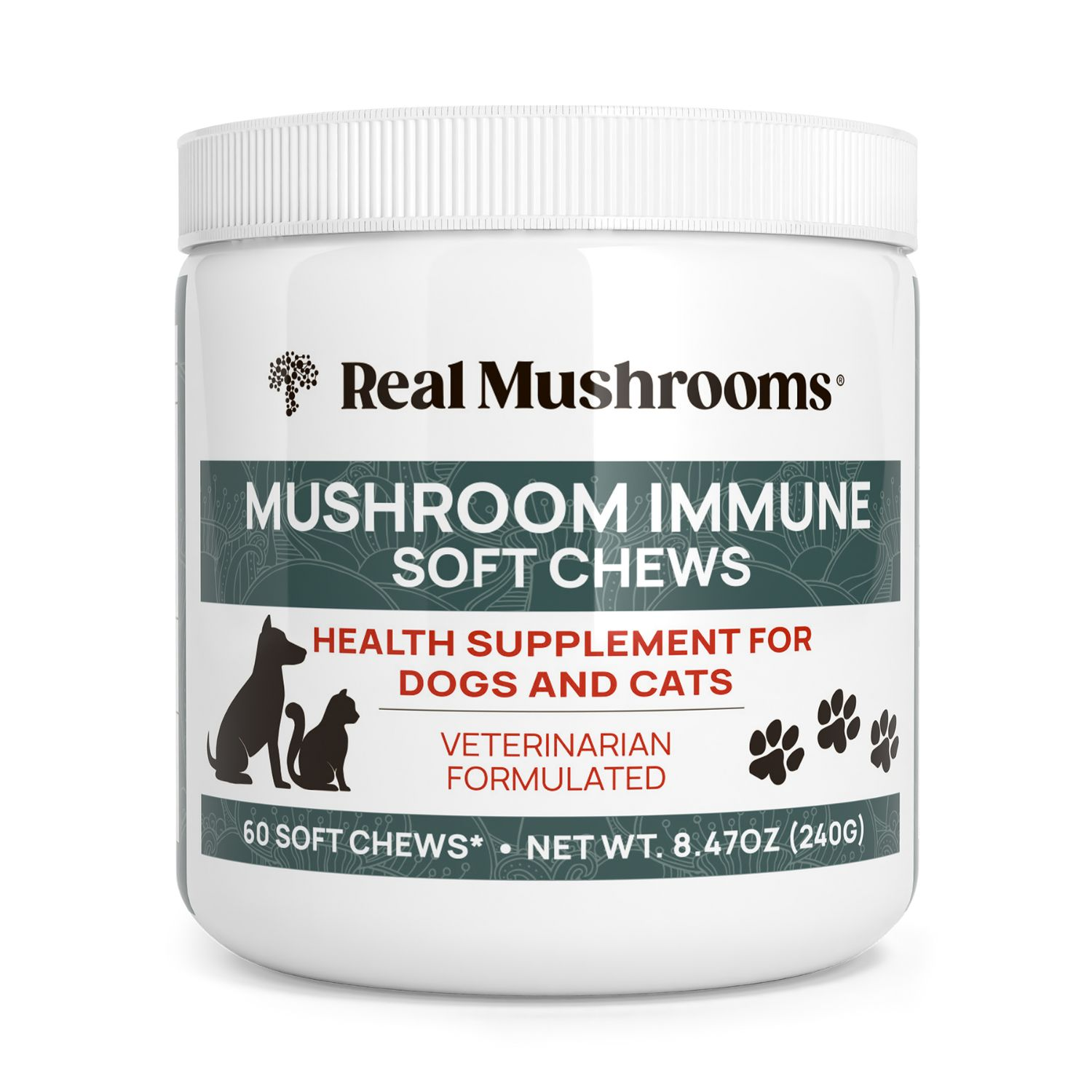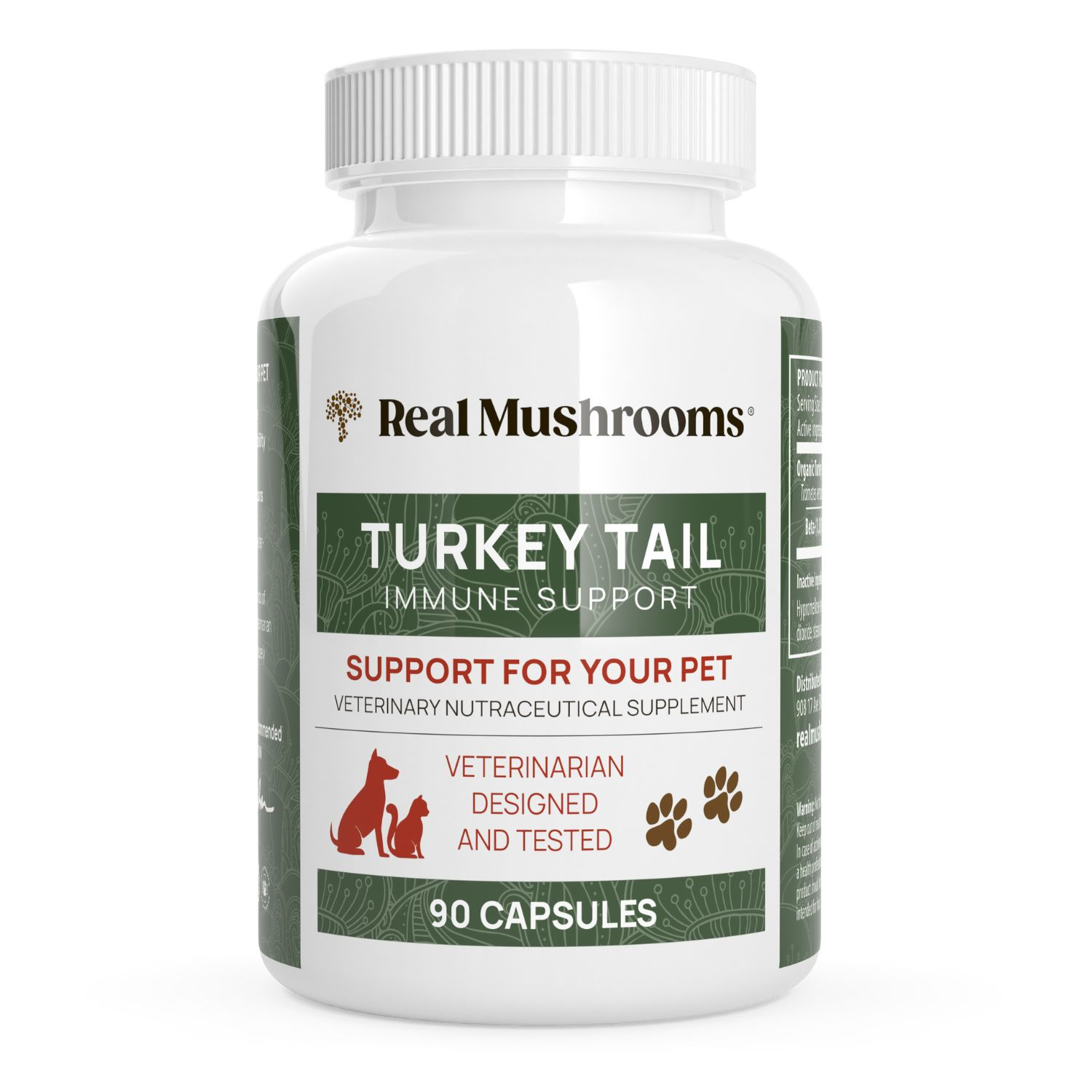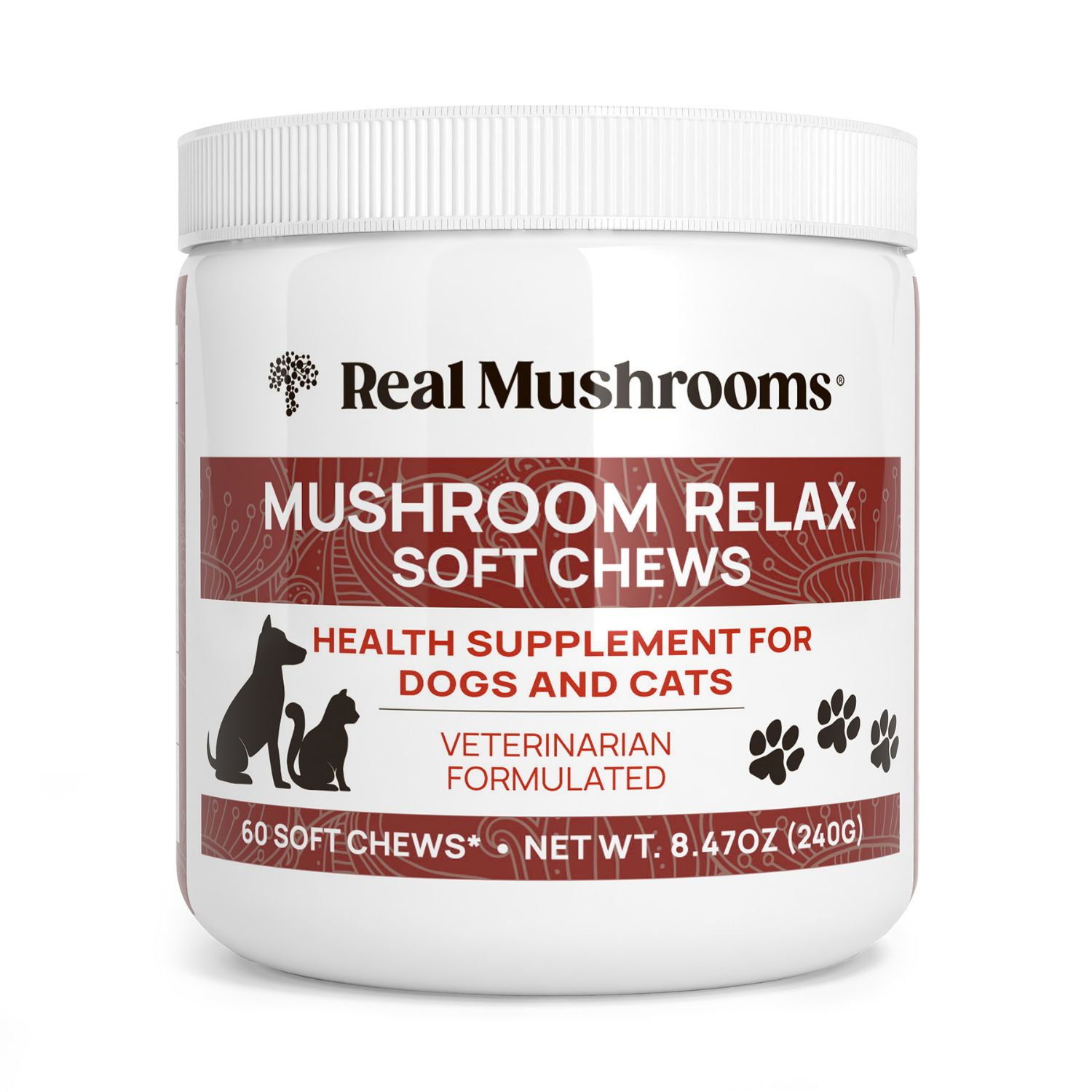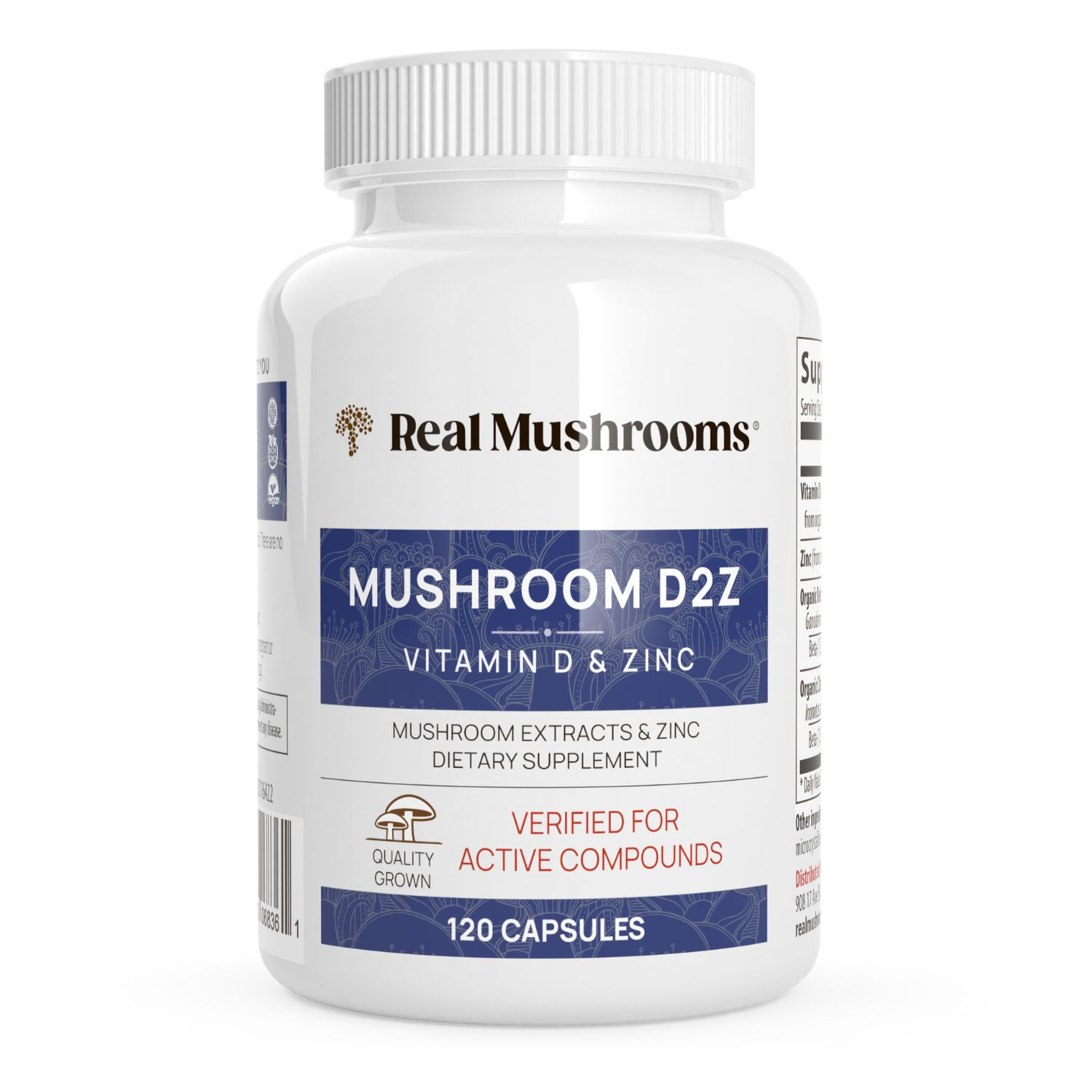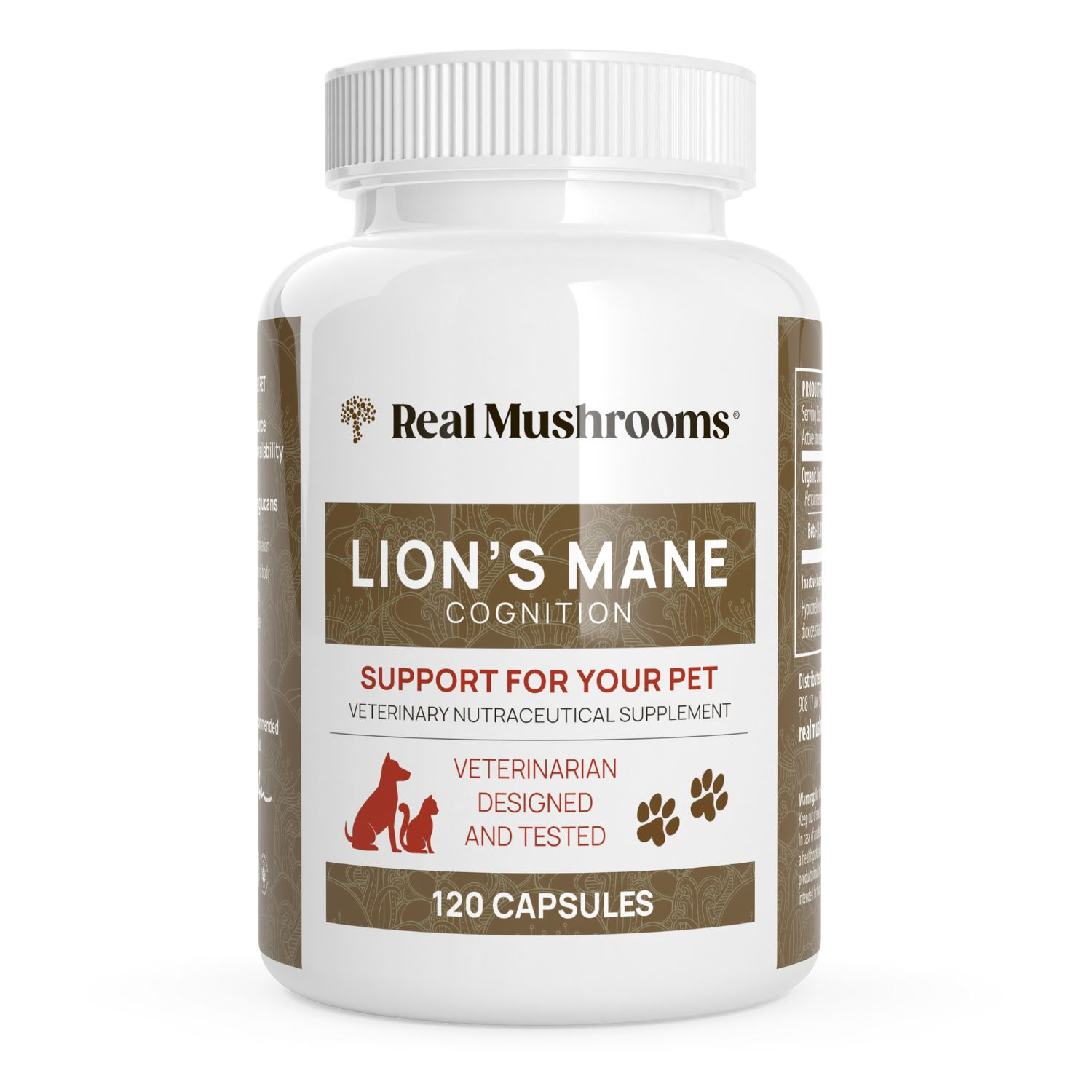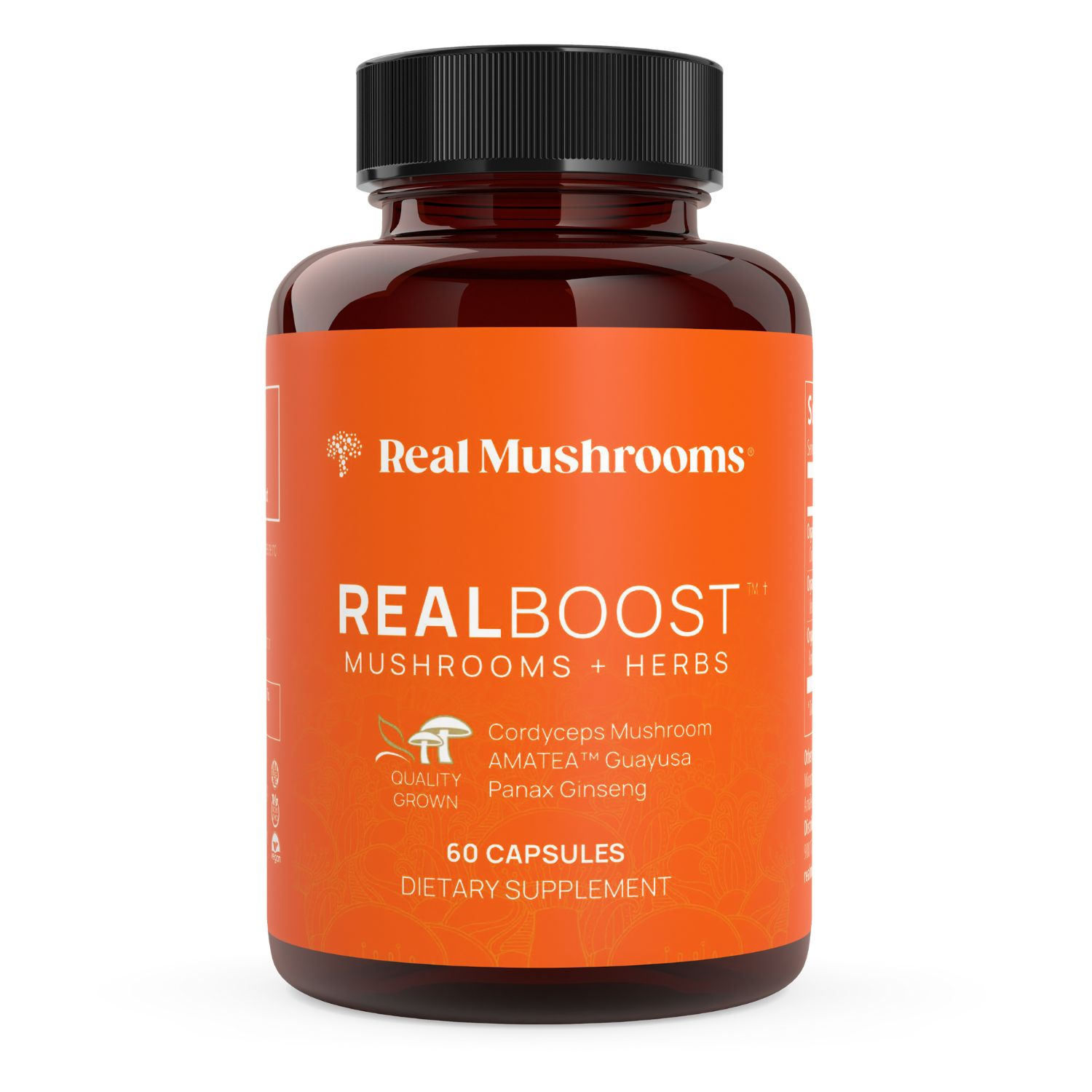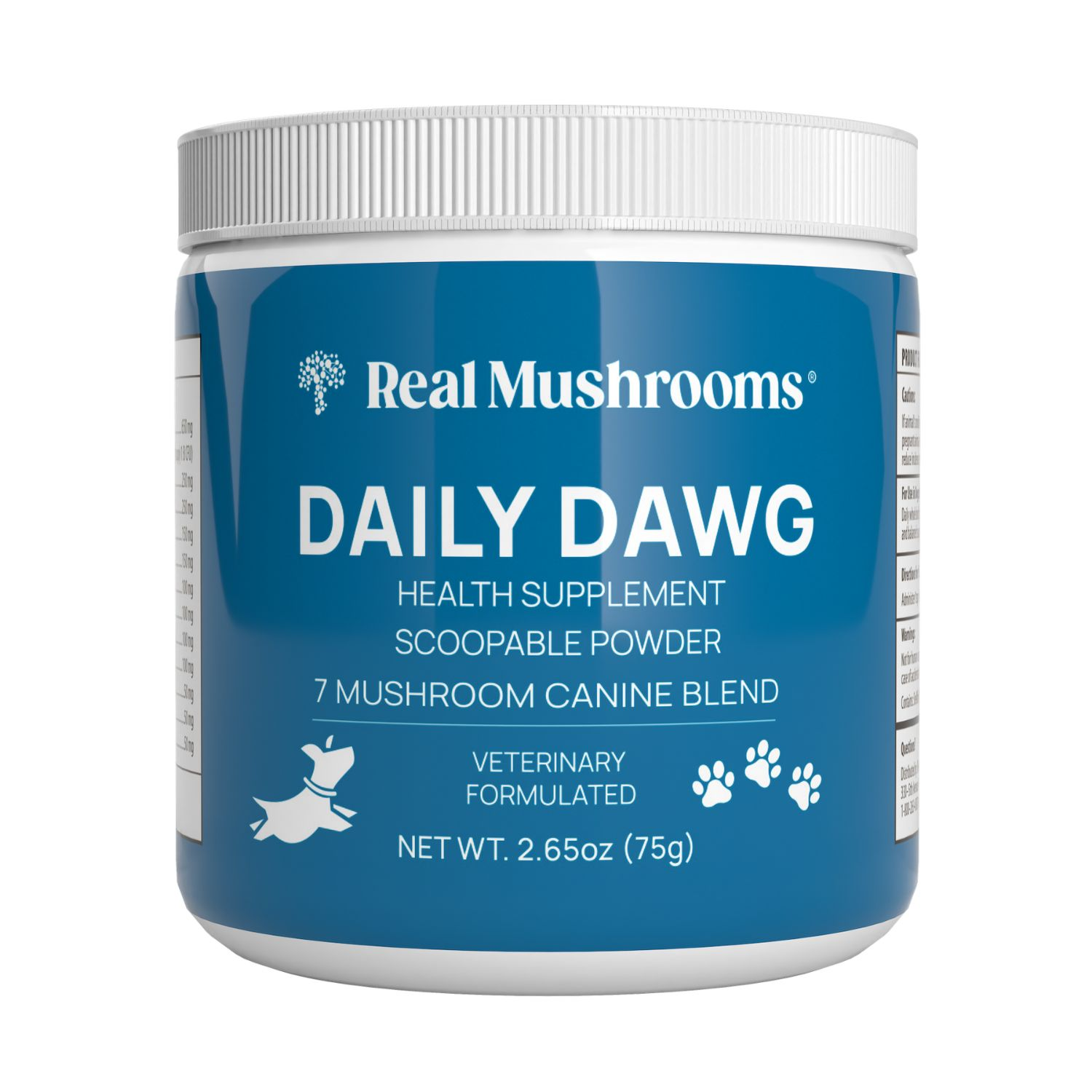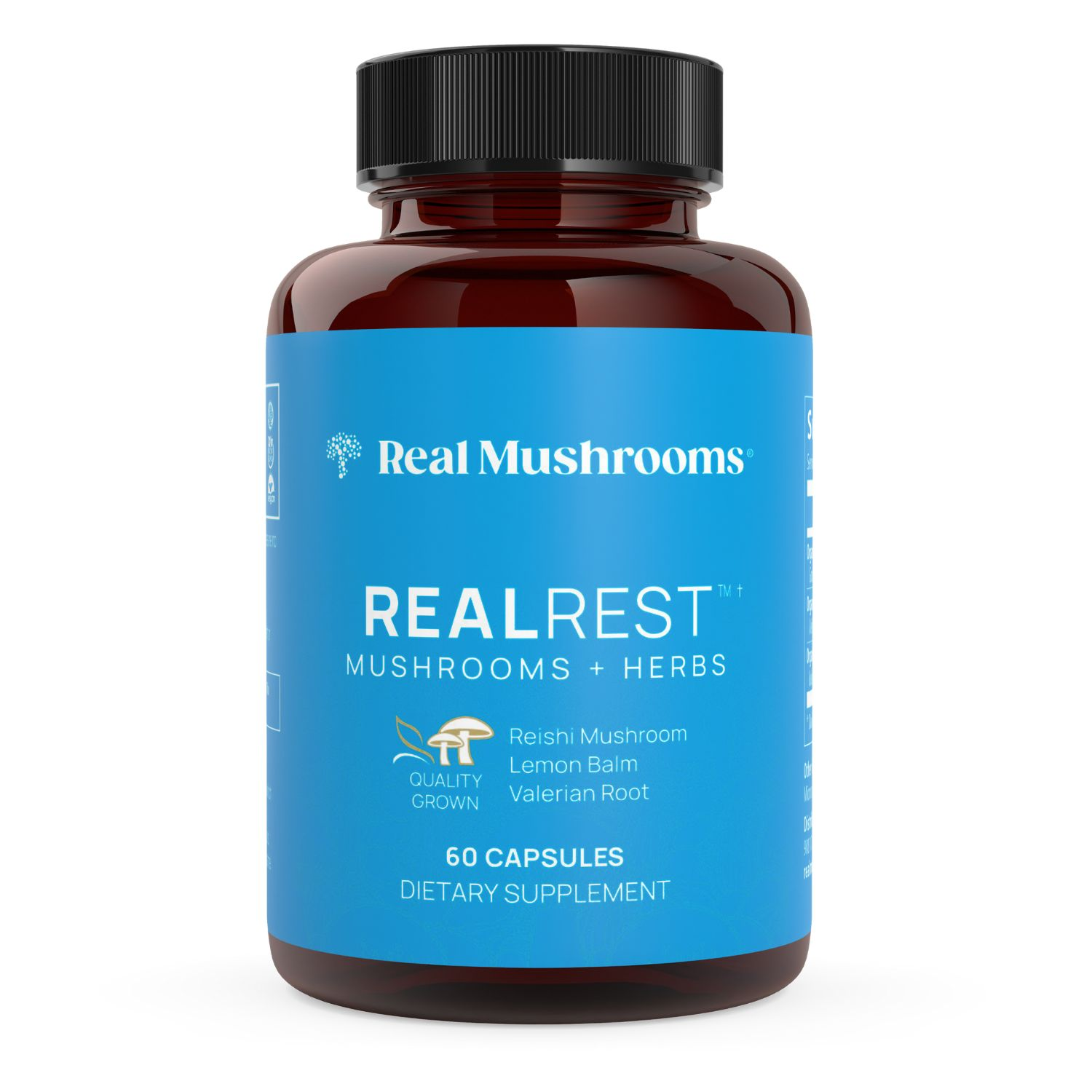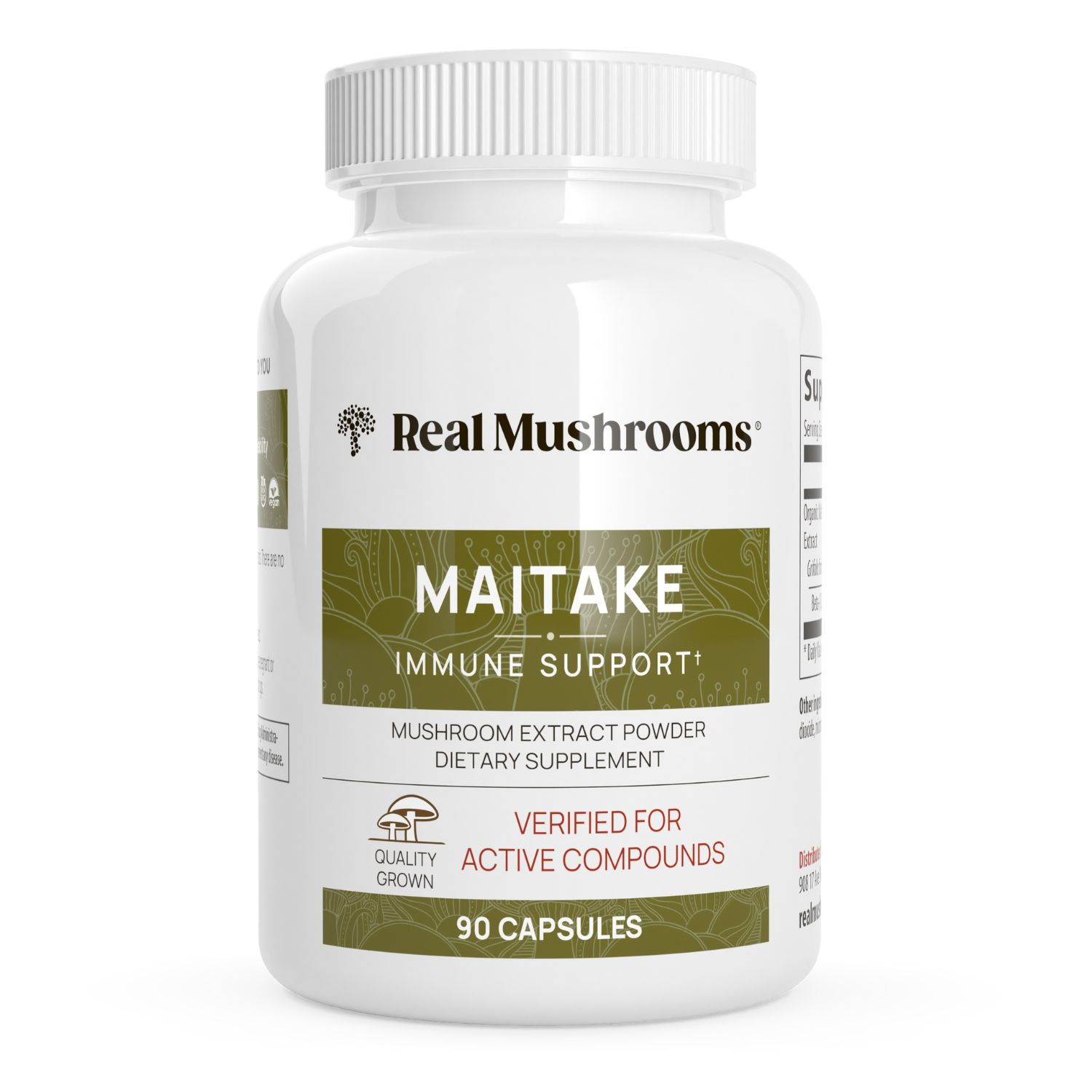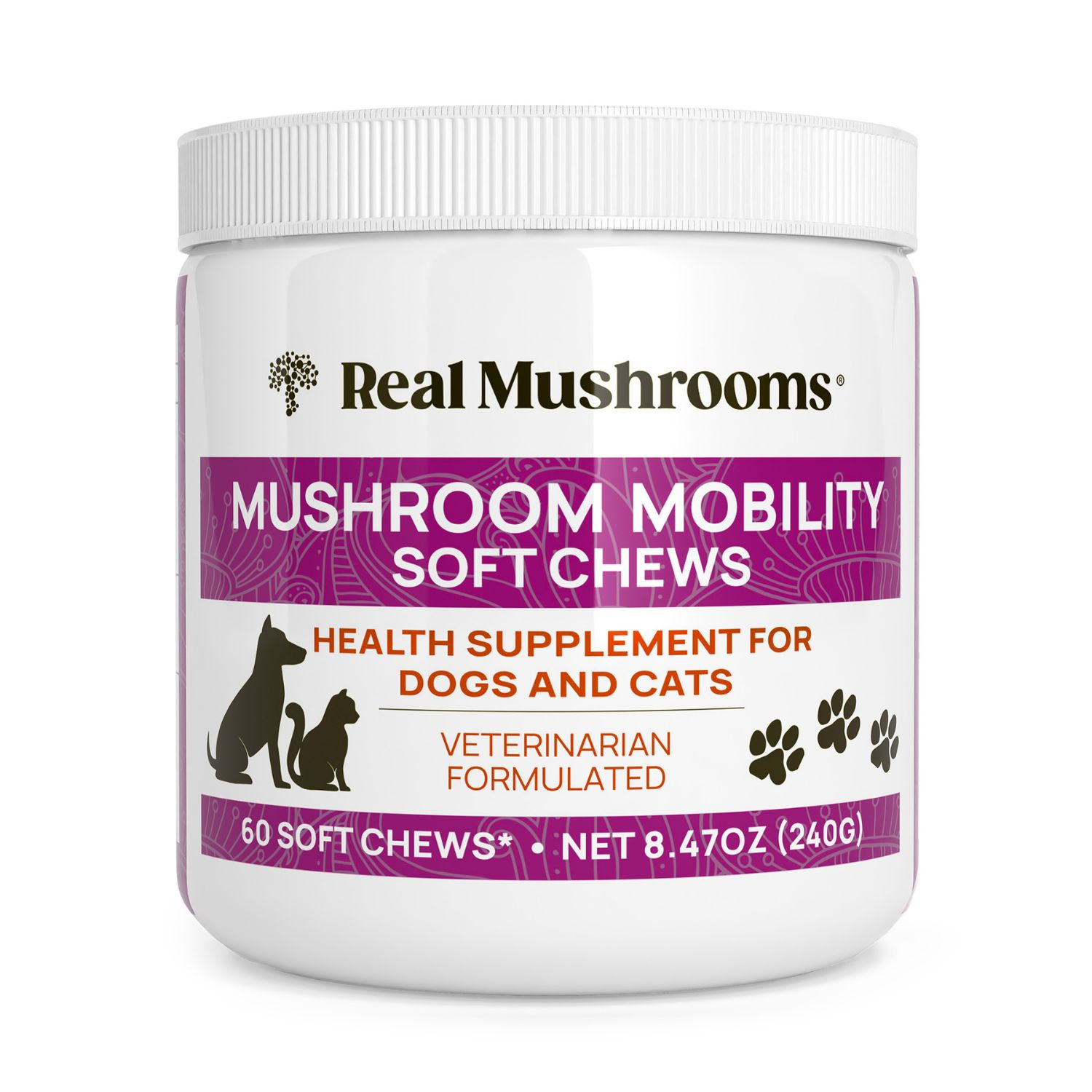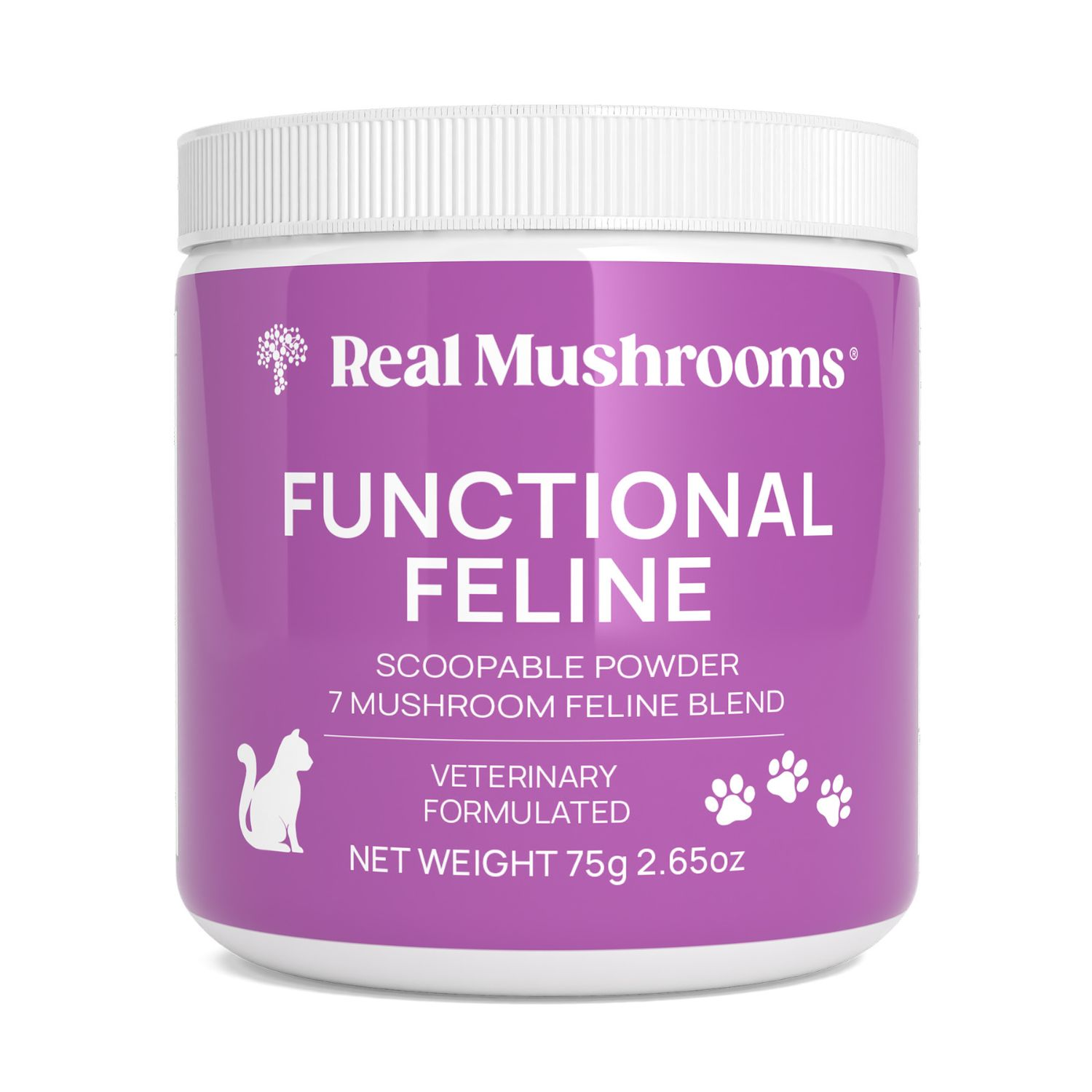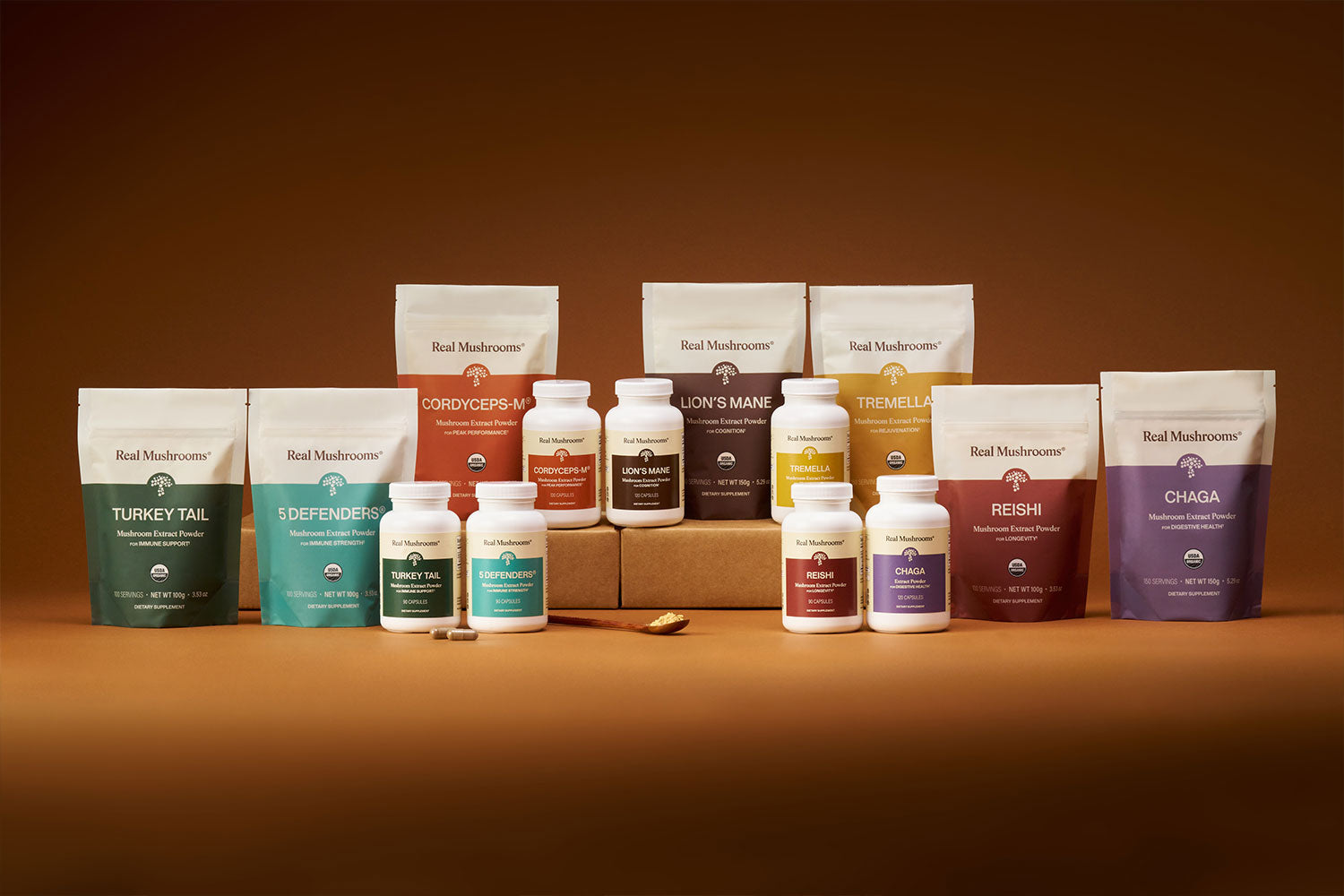Mushrooms for Gut Health: How Functional Fungi Can Help Digestion
14 minute read

Before we dive in, here's a quick note: this isn’t a sales pitch. It’s a gut health primer—grounded in science, my clinical experience, and traditional knowledge. The goal is simple: to empower you with insights so you can make informed decisions about how mushrooms support whole-body wellness and gut health.
In This Article
- Introduction: Gut Health, Ancient Wisdom, and Modern Science
- The Gut’s Protective Barriers: A Whole-Body Defense System
- The Gut Is a Network, Not a Single Wall
- Understanding Microbiota vs. Microbiome
- Microbiota Modulation & Fermentation-Derived Metabolites
- Why Mushrooms Are So Effective for Gut Health
- Mushroom-Specific Effects on the Microbiota
- The Case for Taking Mushrooms for Gut Health Daily
Introduction: Gut Health, Ancient Wisdom, and Modern Science
The gastrointestinal tract (GIT) is much more than just a digestive tube—it’s a dynamic, intelligent boundary between you and the outside world. It hosts trillions of microbes, expertly orchestrates digestion and nutrient absorption, and plays a central role in immune defense, whole-body communication, and a whole lot more.
Enter functional mushrooms: nature’s oldest—and now newly recognized—gut health champions. They've been treasured for centuries in Traditional Chinese Medicine and other ancient healing systems. However, it’s only within the past decade that science has begun to confirm their impressive prebiotic and microbiota-modulating capabilities. Rich in β-glucans, chitin, phenolic compounds, and specialized antioxidants like ergothioneine, mushrooms deliver a unique, multi-faceted toolkit designed to nourish your gut.
What truly makes mushrooms exceptional is their holistic support of the gut ecosystem. They nurture beneficial microbes, fortify mucosal barriers, modulate immune responses, support healthy inflammation responses, and even influence distant organs like the brain, liver, skin, and cardiovascular system via interconnected biological pathways—often referred to as gut–organ axes, like the well-known gut-brain axis.
In this blog, we’ll explore how mushrooms such as Reishi, Lion’s Mane, and even the humble white button mushroom can powerfully support gut health, with a focus on the gut’s barriers and defense mechanisms. We’ll unpack the science behind their benefits through a lens that blends ancient wisdom with emerging clinical evidence.
The Gut’s Protective Barriers: A Whole-Body Defense System
To work at its best, your gastrointestinal tract (GIT) relies on multiple protective layers—each doing a specific job, but all working together as a team. And here’s the good news: mushrooms can support every one of them.

- Your gut microbiota—the trillions of microbes living in your gut—play a big role in digestion, immune function, and metabolism <36>.
- The mucus layer forms a gel-like coating that protects the gut lining from stomach acid and harmful substances. It also creates space between gut microbes and the intestinal wall, while providing fuel for beneficial bacteria <21>.
- The epithelial lining helps absorb nutrients and serves as a gatekeeper between your gut and the rest of your body. It also plays a key role in signaling and communication with other organs <1>.
- The immune layer lies just beneath the surface and is home to immune cells like dendritic cells, lymphocytes, and IgA-producing B cells—all of which help your body recognize what’s helpful and what’s not <36>.
- The gut-vascular barrier, like a customs officer, decides what can cross from your gut into your bloodstream, helping to prevent the spread of harmful microbes or their by-products <24>.
- The chemical barrier includes stomach acid, bile, digestive enzymes, and natural antimicrobial substances. These help maintain a healthy pH, control unwanted microbes, and support proper digestion and nutrient absorption <28>.
The Gut Is a Network, Not a Single Wall
These protective layers in your gut aren’t isolated silos—they’re part of an interconnected system. They influence and support each other constantly. For example:
- The mucus layer is shaped by signals from gut microbes.
- The epithelial lining responds to digestive secretions.
- Immune cells patrol the gut lining and help the body stay tolerant to helpful microbes while staying alert to potential threats.
Together, this dynamic network helps maintain balance in the gut, what scientists call “gut homeostasis.”
But when one part of this system breaks down—whether from poor diet, stress, certain medications, infections, or environmental toxins—the whole system can be affected. One possible result? Increased intestinal permeability. This describes changes in the gut barrier that may allow microbes or microbial components, such as lipopolysaccharides (LPS), to move beyond the intestinal lining. Researchers are actively exploring how this may affect the interaction between the gut barrier and immune signaling in relation to general well-being <11>, <1>.
In natural medicine, restoring gut balance has always been a central theme—through herbs, broths, fermented foods, fasting, and fiber. It’s how I was trained as a medical herbalist, and it’s still a powerful foundation today.
Ongoing research continues to highlight the role of gut health in supporting energy, immune balance, mood, and overall well-being. A healthy diet remains the cornerstone: fiber-rich vegetables, fermented foods, antioxidant-rich herbs, plenty of water, healthy fats, stress-reducing practices—and yes, mushrooms—can all help support a thriving gut ecosystem.
This is a rapidly evolving field, with new insights emerging on how our gut and its microbial partners influence nearly every system in the body.
Understanding Microbiota vs. Microbiome
Before we get into the specific ways mushrooms support gut health, here’s a quick but important clarification: the terms microbiota and microbiome often get used interchangeably, but they refer to different things. Understanding this distinction will help make sense of the research and clinical insights we’ll explore below.
(Feel free to skip the next section if you’re busting to dive into the mushroom content—it’ll still make sense.)

Microbiota = The Microbial Residents
Your microbiota refers to the full community of microorganisms, bacteria, fungi, protozoa, and archaea that live in or on different parts of your body. These communities are highly specific to their environment and respond to changes in age, diet, hormones, medications, and lifestyle <36>.
While the gut microbiota gets most of the attention (and for good reason), your body actually hosts multiple distinct microbiotas, including those found in the:
- Mouth (oral cavity)
- Nose and sinuses
- Lungs
- Skin
- Eyes (ocular surface)
- Urinary tract
- Urogenital tract
Think of the microbiota as the residents of a city or town—who they are, where they live, and how many of them there are.
Microbiome = What the Residents Can Do
The microbiome, on the other hand, is all about function. It refers to the collective genes, proteins, enzymes, and metabolites produced by those microbial communities.
It includes:
- The genetic material of the microbes
- The proteins and enzymes they make
- The metabolites they produce (like short-chain fatty acids)
- And how they interact with us, the host
So if the microbiota is about who’s there, the microbiome is about what they can do.
This includes helping to digest food, produce certain vitamins, maintain immune balance, and even influence mood and brain function—all through their interactions with the gut, immune system, and nervous system.
Among the many compounds produced by the microbiome, short-chain fatty acids (SCFAs)—including butyrate, acetate, and propionate—are especially important. They help nourish the gut lining, regulate immune signals, and influence communication between the gut and other organs <40>.
Fascinating Fact: Several body areas have unique microbiomes shaped by local microbes and conditions. For instance, in your armpits, microbes break down sweat into odor compounds, and stress hormones can shift this scent by altering sweat chemistry.
Microbiota Modulation & Fermentation-Derived Metabolites
Now that we’ve clarified who the microbiota are and what they can do, let’s explore how mushrooms directly shape this microbial ecosystem, not passively, but as active modulators of both composition and function.
A healthy microbiome isn’t just about having more “good bugs.” Two key markers of resilience are:
- Richness — the total number of different species present
- Diversity — how evenly those species are distributed across the ecosystem
A diverse and balanced microbiota is more adaptable, better at resisting stressors, and more capable of maintaining immune and metabolic balance.
In practice, I often use PCR-based stool testing to measure microbial profiles. I’ve seen species counts as low as 100 and as high as 280. But numbers alone don’t tell the whole story. One patient might have moderate richness but remarkable balance—no single microbe dominating. Another might show dominance by one or two species—accounting for over 20% of the total population—which can affect microbial balance and reduce adaptability within the gut ecosystem..
These tests help reinforce a key insight: it’s not just how many microbes there are, but how they coexist.
Studies of traditional populations like the Hadza or Yanomami consistently show microbial richness exceeding 400–600 species <25>, <7>. Their diets are high in wild plant fiber and free of ultra-processed foods and pharmaceuticals—conditions that help shape some of the most robust microbiomes on record.
While we can’t exactly recreate that environment, mushrooms offer a promising nutritional approach to support gut microbial balance and diversity.
Why Mushrooms Are So Effective for Gut Health
Mushrooms are rich in non-digestible, fermentable polysaccharides—including β-glucans, chitin, oligosaccharides, and non-starch alpha-glucans—which bypass digestion in the upper gut and reach the colon, where they are fermented by microbes into health-promoting compounds.
These include short-chain fatty acids (SCFAs) like:
- Butyrate, which nourishes colon cells and reinforces barrier integrity
- Acetate, which supports mucosal immunity and metabolic flexibility
- Propionate, which helps regulate cholesterol metabolism and immune signaling
SCFAs are not waste products—they are highly active metabolites that communicate with the brain, immune system, liver, and beyond.
Recent research confirms this impact. A 2023 pilot study showed that daily mushroom supplementation increased levels of butyrate and propionate while also boosting gut IgA—a key marker of mucosal immunity (Nishimoto et al., 2023). These benefits were especially pronounced in individuals with more balanced baseline microbiota.
In another recent study, Zavadinack et al. (2024) showed that structural differences in mushroom β-glucans—especially 1,3 and 1,6 linkages—can alter how they are fermented by gut bacteria, selectively enhancing beneficial microbes and SCFA output <39>. Importantly, this study examined both soluble and insoluble β-glucans, each offering distinct yet complementary benefits. Soluble fibers tend to ferment more quickly and produce acetate and propionate, while insoluble fibers support sustained SCFA production deeper in the colon, producing more butyrate. That’s why I look for mushroom products that retain both—Real Mushrooms Lion’s Mane, for instance, contains the full spectrum of soluble and insoluble β-glucans and remains one of my go-to options in clinical practice and personal use. Tremella and Chaga are also great choices.

Mushroom-Specific Effects on the Microbiota
Let’s get specific. Different mushrooms appear to nourish different bacterial allies:
- Lion’s Mane (Hericium erinaceus) boosts Akkermansia, Faecalibacterium, and Roseburia—all key producers of SCFAs and guardians of gut barrier integrity <37>, <20>.
- Reishi (Ganoderma lucidum) supports Lactobacillus, Bifidobacterium, and Akkermansia, while helping suppress potentially challenging taxa like Shigella and Bilophila <16>.
- White Button Mushrooms (Agaricus bisporus) increase Bacteroidetes, enhance stool bulk, and improve microbial evenness—even in healthy individuals <17>.
- King Oyster (Pleurotus eryngii), when fermented by human gut microbes, produces compounds that help protect the intestinal lining—supporting the inflammation response and strengthening the gut barrier by supporting tight junctions (Kerezoudi et al., 2025).
These aren’t superficial shifts—they have a ripple effect influencing multiple aspects of health, including:
-
Neurotransmitter precursors and gut–brain signaling
For example, increases in bacteria like Faecalibacterium and Roseburia can boost production of compounds involved in supporting mood, sleep, and stress resilience <30>, <8>. This might help explain why Reishi, traditionally used to support sleep, seems to be more effective in some individuals, possibly due to differences in microbiota composition or neurotransmitter pathways. -
Tight junction proteins and barrier resilience
SCFA production from mushroom fermentation supports gut lining integrity, helping to maintain a healthy barrier function. This can be especially helpful for people with sensitive digestion or skin issues <22>, <4>. -
T-reg cell activation and mucosal immune tolerance
Certain microbial shifts associated with mushroom intake have been linked to support for regulatory T cells—key players in maintaining immune system balance and mucosal tolerance <12>, <40>. By supporting this regulatory arm of the immune system, mushrooms may help the body respond appropriately to everyday environmental exposures, support a healthy inflammation response, and promote overall immune resilience, especially at the gut lining, where much of the immune system resides.
In other words, this isn’t just about digestion—it’s about systemic balance.
Mushrooms are more than fiber—they are rich in compounds that support microbial balance, SCFA production, and gut barrier integrity. s. By feeding the right microbes and activating key metabolic pathways, they create additive effects that extend far beyond the gut, touching mood, metabolism, inflammation, and immune tone.
The Case for Taking Mushrooms for Gut Health Daily
When we step back and look across all these systems—the microbiota, the mucosal barrier, the immune network, the gut–brain axis, and beyond—a clear theme emerges: mushrooms help maintain balance.
Not with brute force, but with nature’s nuance—supporting resilience at both the microbial and cellular level. For patients and practitioners alike, this makes medicinal and culinary mushrooms compelling allies in the ongoing care of gut and systemic health.
So whether you stir Lion’s Mane into your morning tonic, cook with white button mushrooms at dinner, or take Reishi as part of your daily routine, know that you’re feeding more than your belly. You’re nourishing a complex ecosystem of intelligence, defense, and deep interconnection.
And don’t stress about getting it perfect. I recently challenged myself to eat 100 grams (about 3 oz) of mushrooms every day for a full month—31 days straight. And as much as I love mushrooms, I’ll be honest: there were a few days where I really had to force it down. That experience reminded me that while culinary intake is valuable, it isn’t always practical or sustainable for everyone.
That’s why being relaxed about how you get your mushrooms—whether through food, a supplement routine, or a bit of both—makes the most sense. The more mushrooms you can comfortably include, the better. What matters most is consistency: making them part of your daily rhythm, over weeks, months, and ideally, over the course of a lifetime. That’s where the real magic happens.

Related Articles
- Functional Mushrooms: 7 Kinds and Their Unique Health Benefits
- Lion’s Mane Mushroom Benefits: A Complete Supplement Guide
- Ergo What? 10 Facts About the New “Super Vitamin”
- Gut Health For Dogs: Understanding and Solving Digestive Issues
References
- Aleman RS, Moncada M, Aryana KJ. (2023). Leaky Gut and the Ingredients That Help Treat It: A Review. Molecules, 28(2):619.
- Blumfield, M., et al. (2020). Examining the health effects and bioactive components in Agaricus bisporus mushrooms. Nutrients, 12(3), 619.
- Camilleri, M. (2019). Leaky gut: mechanisms, measurement and clinical implications in humans. Gut, 68(8), 1516–1526.
- Canfora, E. E., Meex, R. C. R., Venema, K., & Blaak, E. E. (2019). Gut microbial metabolites in obesity, NAFLD and T2DM. Nature Reviews Endocrinology, 15(5), 261–273. https://doi.org/10.1038/s41574-019-0156-z
- Case, C. L., et al. (2024). β-glucans from Agaricus bisporus mushroom products drive trained immunity. Journal of Immunology Research, 2024, 556013.
- Cheah, I. K., & Halliwell, B. (2017). Ergothioneine; antioxidant potential, physiological function and role in disease. Biochimica et Biophysica Acta (BBA) - Molecular Basis of Disease, 1861(1), 593–603.
- Clemente, J. C., Pehrsson, E. C., Blaser, M. J., Sandhu, K., Gao, Z., Wang, B., ... & Dominguez-Bello, M. G. (2015). The microbiome of uncontacted Amerindians. Sci Adv 1: e1500183.
- Cryan, J. F., O’Riordan, K. J., Cowan, C. S. M., Sandhu, K. V., Bastiaanssen, T. F. S., Boehme, M., et al. (2019). The microbiota–gut–brain axis. Physiological Reviews, 99(4), 1877–2013. https://doi.org/10.1152/physrev.00018.2018
- DeMeo, M. T., et al. (2022). Intestinal permeability defects: is it time to treat? Current Opinion in Gastroenterology, 38(2), 127–134.
- Diling, C., et al. (2017). Extracts from Hericium erinaceus relieve inflammatory bowel disease by regulating immunity and gut microbiota. Oncotarget, 8(49), 85838–85857.
- Fasano A. (2020). All disease begins in the (leaky) gut: role of zonulin-mediated gut permeability in the pathogenesis of some chronic inflammatory diseases. F1000Res, 9:F1000 Faculty Rev-69.
- Furusawa, Y., Obata, Y., Fukuda, S., et al. (2013). Commensal microbe-derived butyrate induces the differentiation of colonic regulatory T cells. Nature, 504(7480), 446–450. https://doi.org/10.1038/nature12721
- Garcia-Sanmartin, J., et al. (2022). Agaricus mushroom diets modulate microbiota–gut–brain axis and brain oxidative stress in mice. Journal of Functional Foods, 91, 105024.
- Gravina, A. G., et al. (2023). Hericium erinaceus, a medicinal fungus with a centuries-old history: Evidence in gastrointestinal diseases. Biomedicine & Pharmacotherapy, 161, 114458.
- Guo, Y., et al. (2020). Ganoderic acid A ameliorates lipid metabolism and alters gut microbiota composition in hyperlipidemic mice. Food & Function, 11(6), 4923–4934.
- Guo, Y., et al. (2021). Ganoderma lucidum polysaccharide modulates gut microbiota and immune system to inhibit inflammation and tumorigenesis in colon. Journal of Functional Foods, 81, 104466.
- Hess, J. M., et al. (2018). Impact of Agaricus bisporus mushroom consumption on gut health markers in healthy adults. Nutrition Research, 56, 1–9.
- Ishimoto, Y., et al. (2018). Protection against gut inflammation and sepsis in mice by autodigested Lingzhi. Phytomedicine, 42, 147–155.
- Jeong, S. C., et al. (2012). Dietary intake of Agaricus bisporus white button mushroom accelerates salivary immunoglobulin A secretion in healthy volunteers. Nutrition, 28(5), 527–531.
- Mitsou, E. K., et al. (2020). Effects of rich in β-glucans edible mushrooms on aging gut microbiota characteristics: A pilot clinical study. Foods, 9(3), 305.
- Paone P, Cani PD. (2020). Mucus barrier, mucins and gut microbiota: the expected slimy partners? Gut, 69(12):2232–2243.
- Peng, L., Li, Z.-R., Green, R. S., Holzman, I. R., & Lin, J. (2009). Butyrate enhances the intestinal barrier by facilitating tight junction assembly via activation of AMP-activated protein kinase. The Journal of Nutrition, 139(9), 1619–1625. https://doi.org/10.3945/jn.109.104638
- Priori, R., et al. (2023). Hericium erinaceus extract exerts beneficial effects on gut–neuroinflammaging–cognitive axis in elderly mice. Biomedicine & Pharmacotherapy, 161, 114511.
- Scalise AA, Kakogiannos N, Zanardi F, Iannelli F, Giannotta M. (2021). The blood-brain and gut-vascular barriers: from the perspective of claudins. Tissue Barriers, 9(3):1926190.
- Schnorr, Stephanie L., Marco Candela, Simone Rampelli, Manuela Centanni, Clarissa Consolandi, Giulia Basaglia, Silvia Turroni et al. "Gut microbiome of the Hadza hunter-gatherers." Nature communications 5, no. 1 (2014): 3654.
- Scuto, M., et al. (2024). Hormetic nutrition and redox regulation in gut-brain axis disorders. Antioxidants, 13(1), 42.
- Shi L, Jin L, Huang W. (2023). Bile Acids, Intestinal Barrier Dysfunction, and Related Diseases. Cells, 12(14):1888.
- Singh SB, Lin HC. (2021). Role of Intestinal Alkaline Phosphatase in Innate Immunity. Biomolecules, 11(12):1784. Schnorr, S. L., Candela, M., Rampelli, S., Centanni, M.,
- Sides, C. D., et al. (2021). The use of mushrooms and spirulina prevent growth inhibition in a preclinical model of an unbalanced diet. Nutrients, 13(4), 1098.
- Strandwitz, P. (2018). Neurotransmitter modulation by the gut microbiota. Brain Research, 1693(Pt B), 128–133. https://doi.org/10.1016/j.brainres.2018.03.015
- Strine, M. S., et al. (2022). Tuft cells are key mediators of interkingdom interactions at mucosal barrier surfaces. Mucosal Immunology, 15(1), 135–147.
- Tian, H., et al. (2022). Digestive characteristics of Hericium erinaceus polysaccharides and effects on fecal microbiota in vitro. International Journal of Biological Macromolecules, 198, 127–136.
- Verhoeven, R., et al. (2021). A blend of three mushrooms dose-dependently increases butyrate-producing gut microbiota in healthy adults: A randomized controlled trial. Frontiers in Nutrition, 8, 769366.
- Wightman, E. L., et al. (2023). Chronic supplementation with a multi-herbal blend enhances cognitive task performance, urinary dopamine, and microbiome composition in older adults. Nutrients, 15(6), 1414.
- Wang, Y., et al. (2020). Auxiliary antitumor effects of fungal proteins from Hericium erinaceus target gut microbiota. Frontiers in Microbiology, 11, 1691.
- Wells JM, Gao Y, de Groot N, Vonk MM, Ulfman L, van Neerven RJJ. (2022). Babies, Bugs, and Barriers: Dietary Modulation of Intestinal Barrier Function in Early Life. Annu Rev Nutr, 42:165–200.
- Xie, X., et al. (2021). Influence of short-term consumption of Hericium erinaceus on gut microbiota: A pilot study. Current Nutrition & Food Science, 17(4), 408–417.
- Yang, B., et al. (2021). Value-added immunoregulatory polysaccharides of Hericium erinaceus and their effects on gut microbiota. Carbohydrate Polymers, 262, 117994.
- Zavadinack, M., Cantu-Jungles, T. M., Abreu, H., Ozturk, O. K., Cordeiro, L. M. C., de Freitas, R. A., Hamaker, B. R., & Iacomini, M. (2024). (1→3),(1→6) and (1→3)-β-D-glucan physico-chemical features drive their fermentation profile by the human gut microbiota. Carbohydrate Polymers, 327, 121678.
- Zhao J, et al. The Interaction between Mushroom Polysaccharides and Gut Microbiota and Their Effect on Human Health: A Review. Biology (Basel). 2023 Jan 12;12(1):122. doi: 10.3390/biology12010122. PMID: 36671814.
